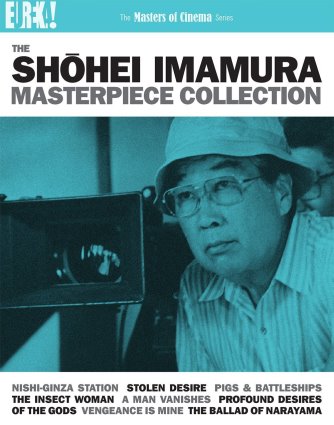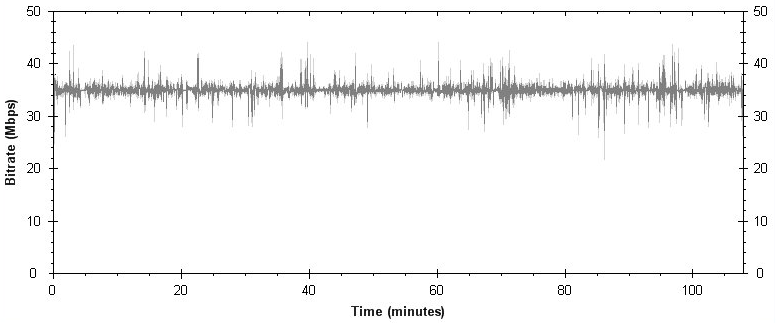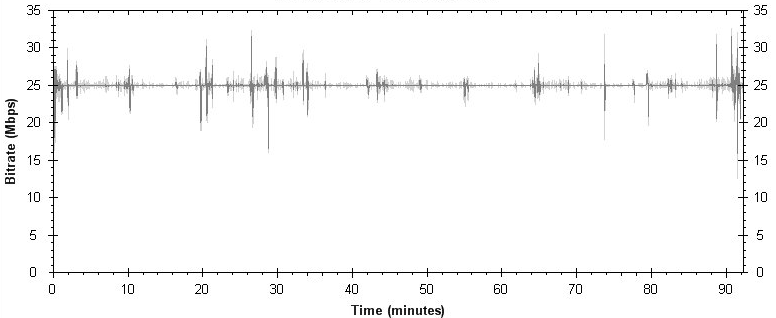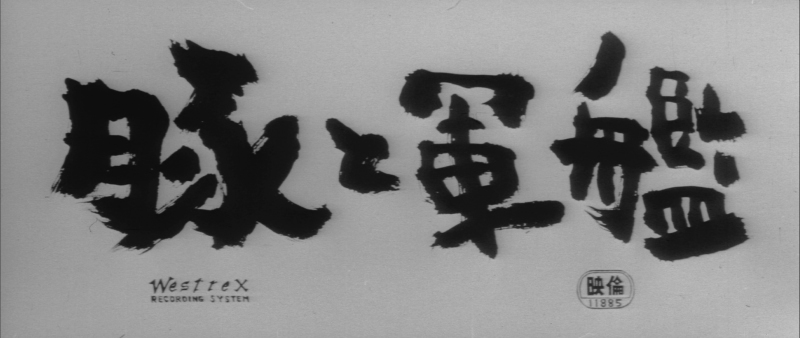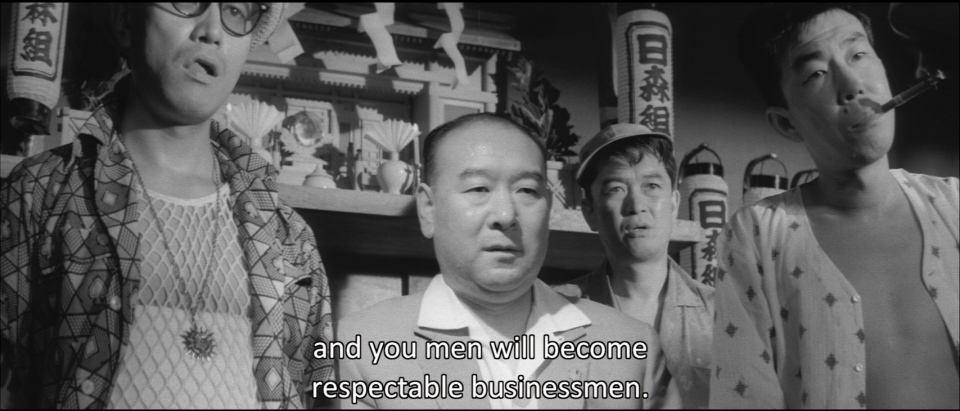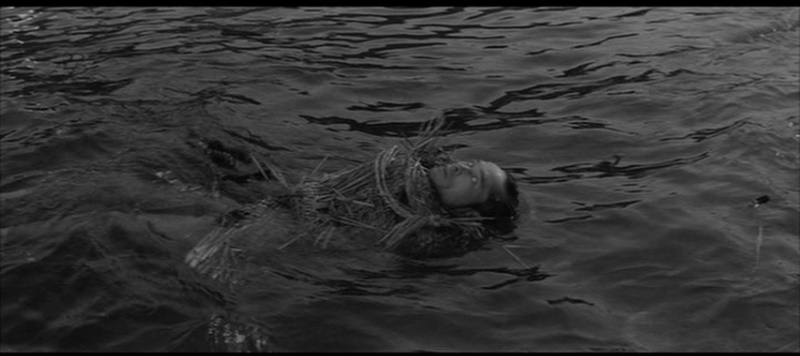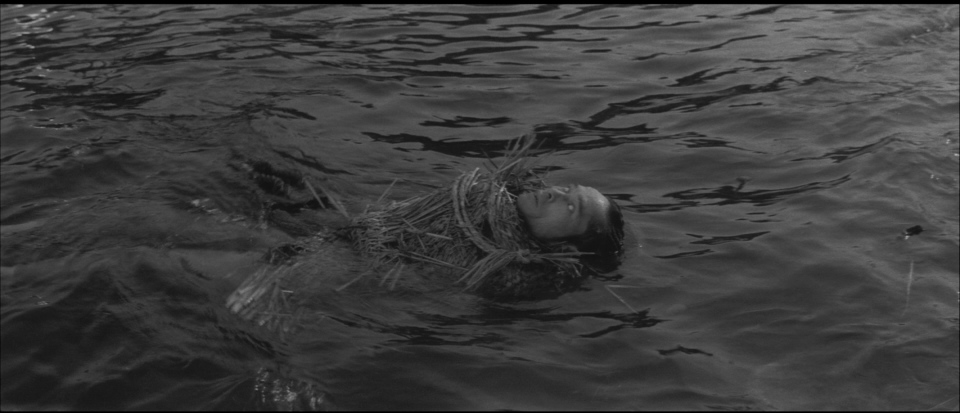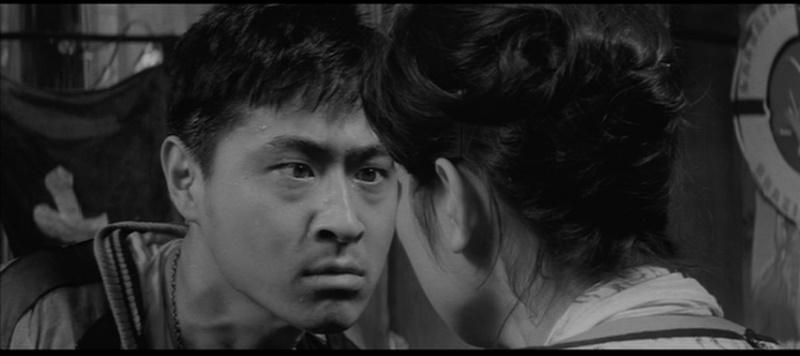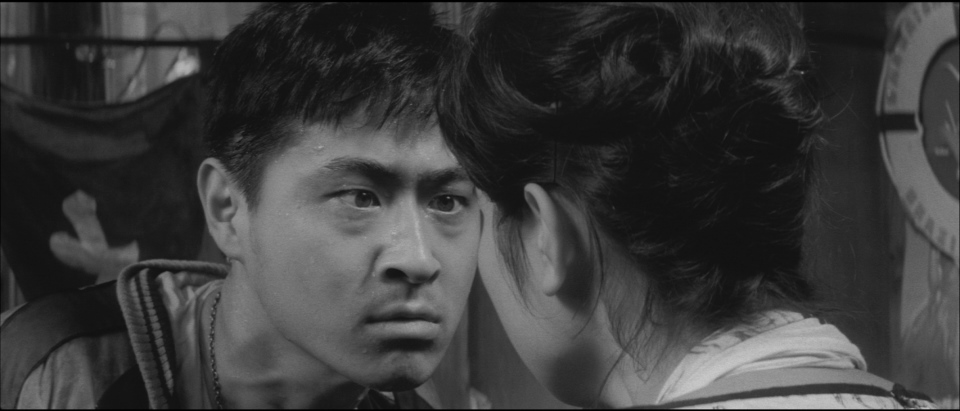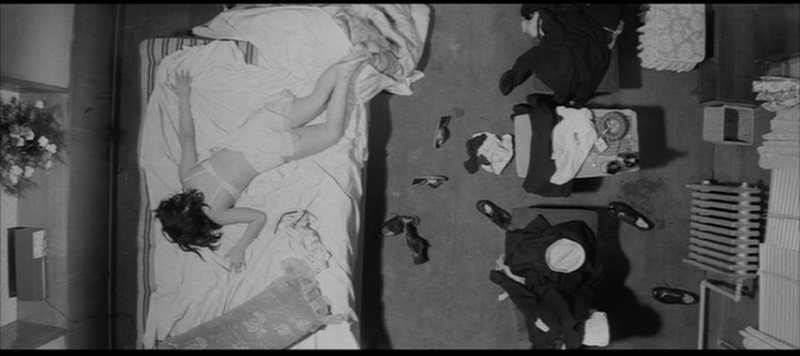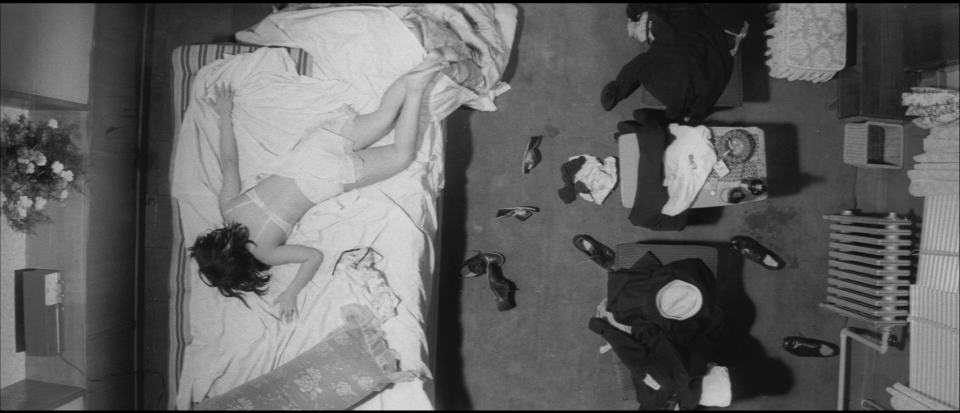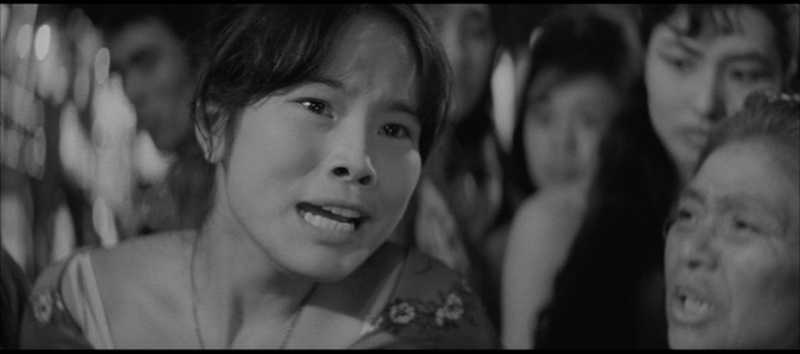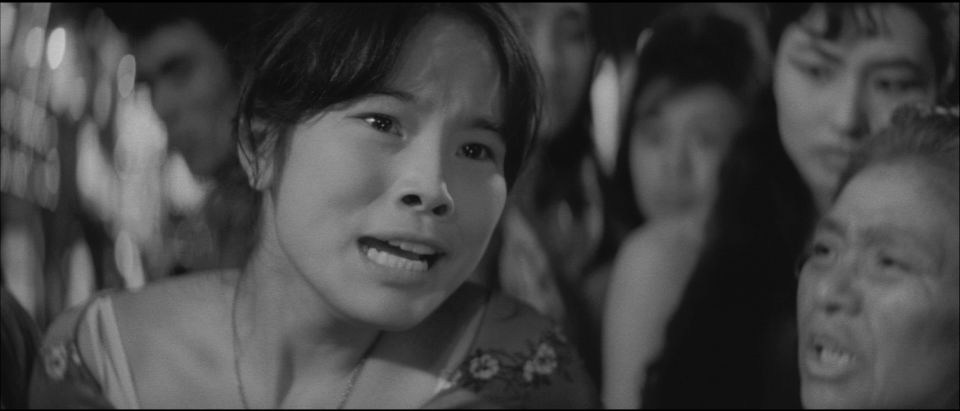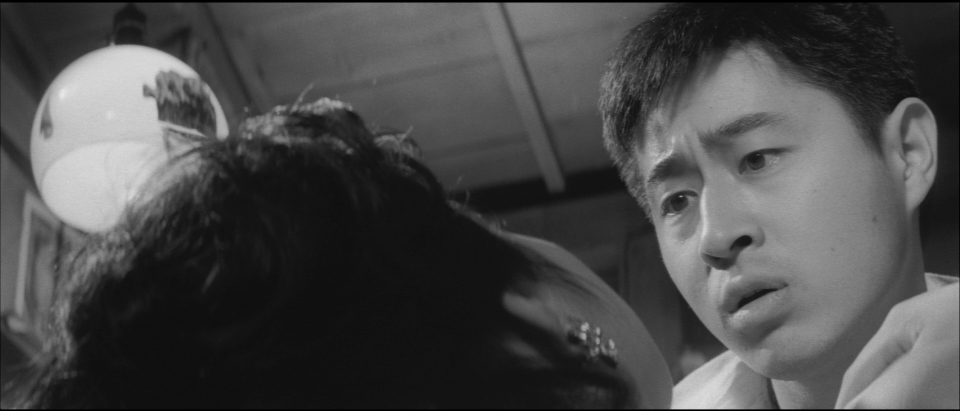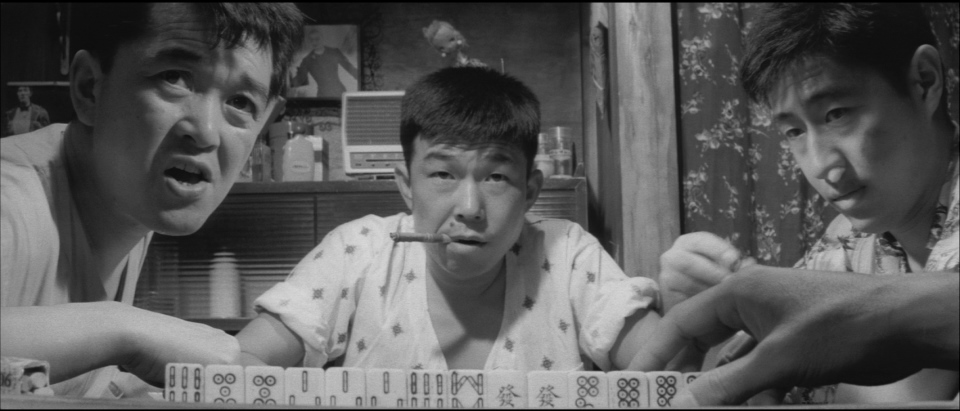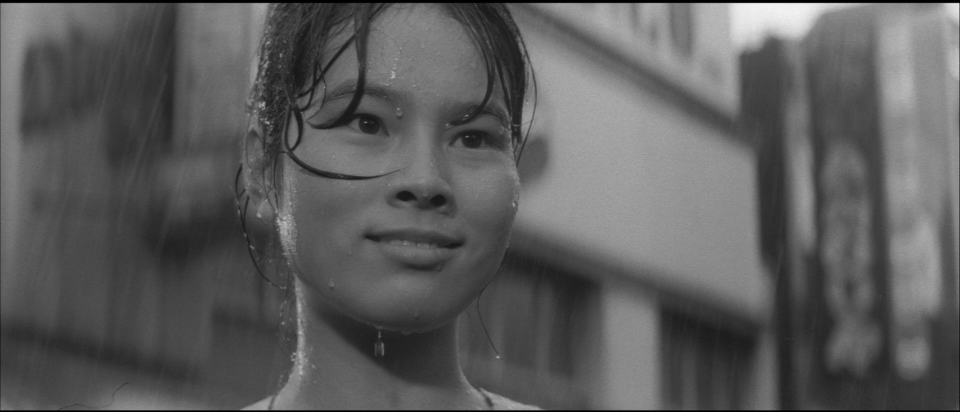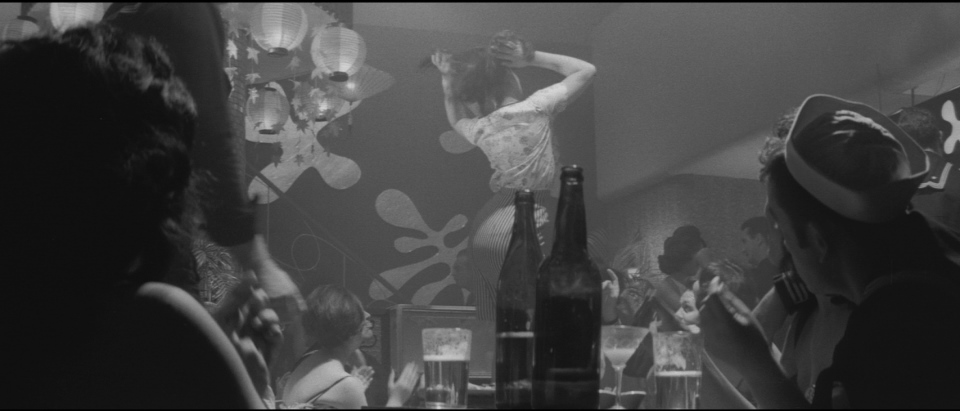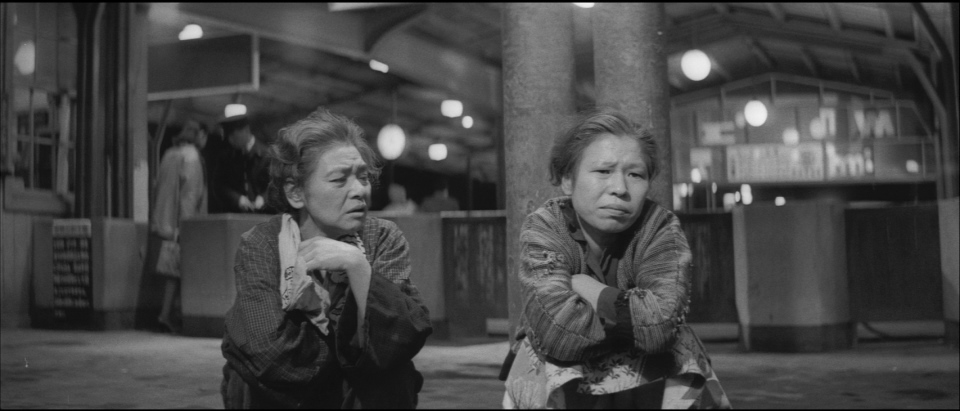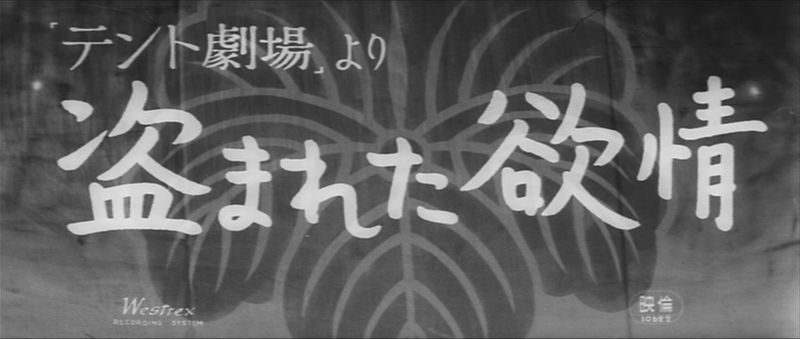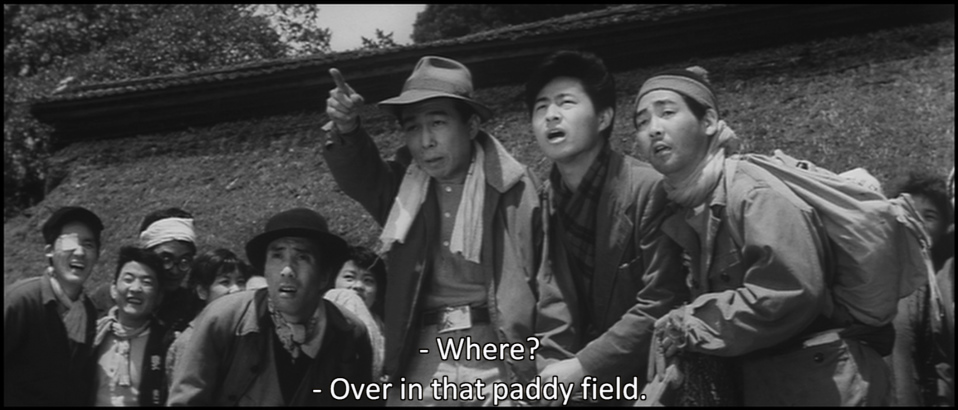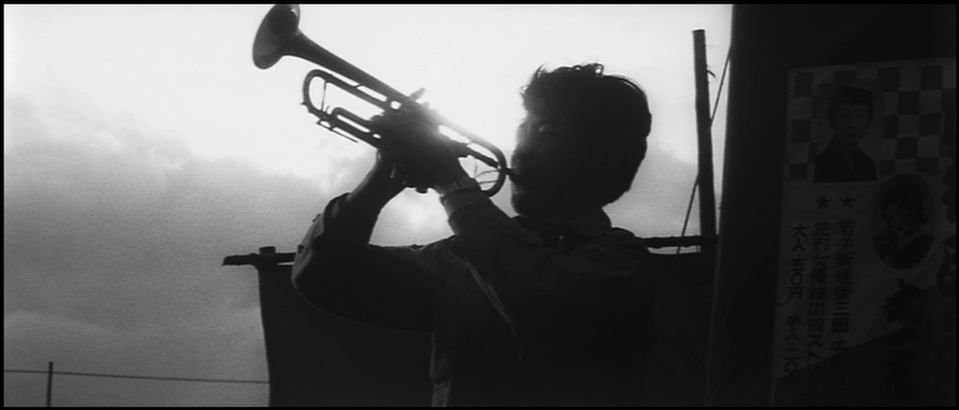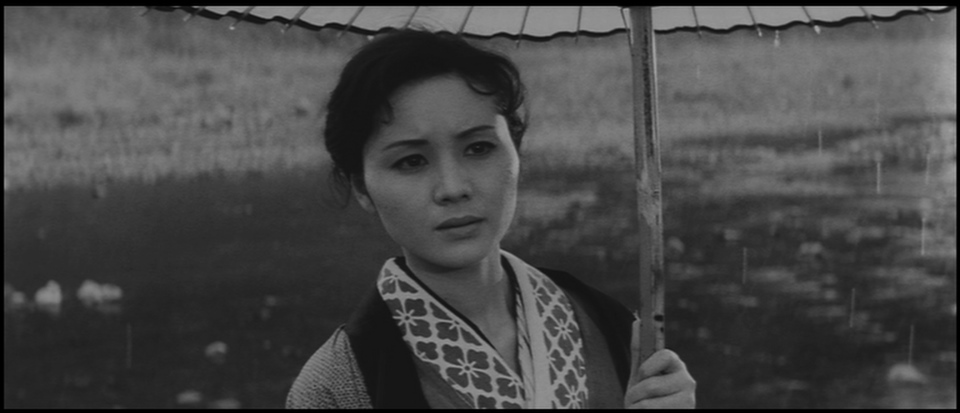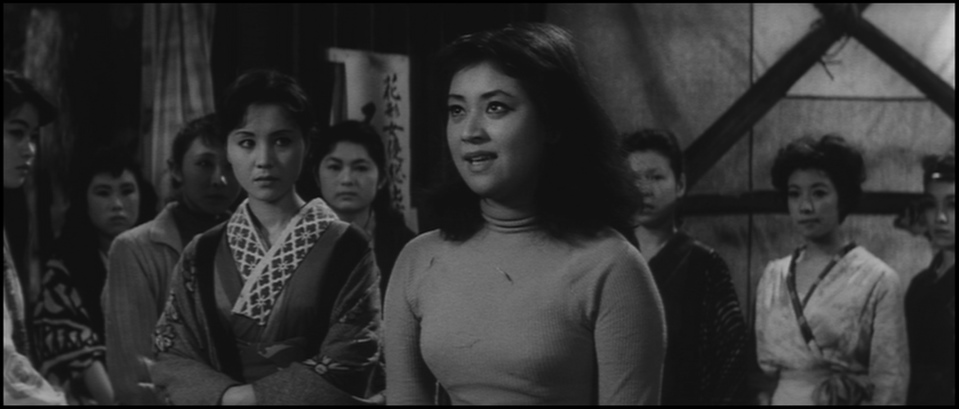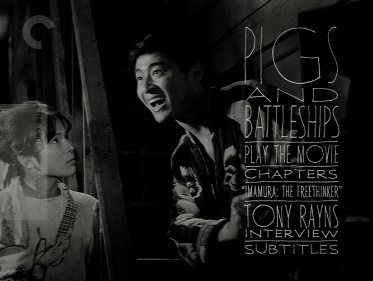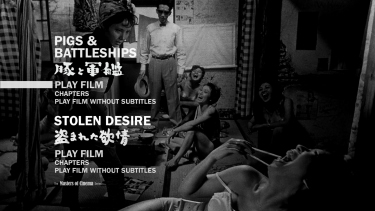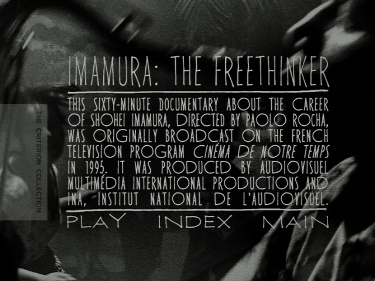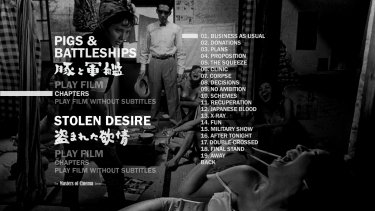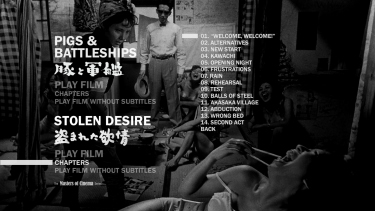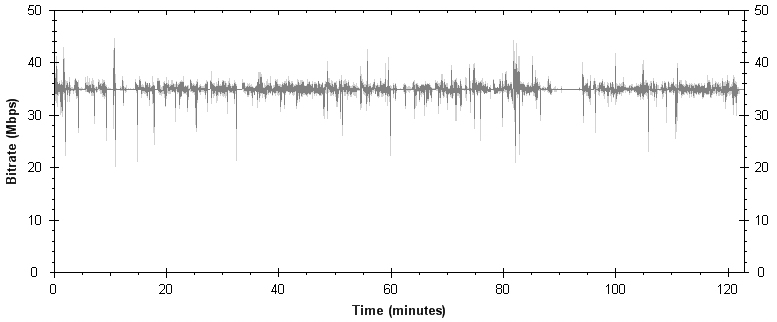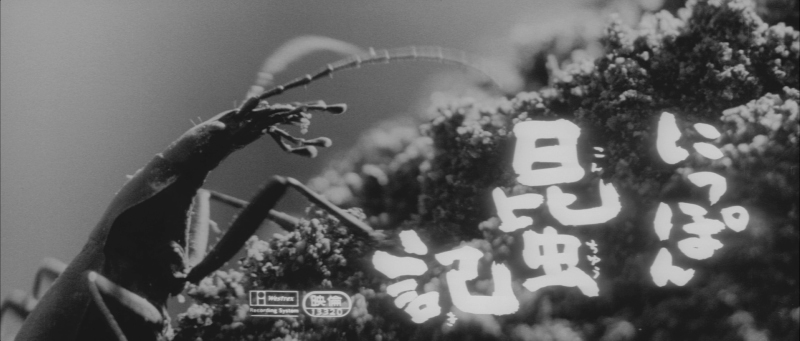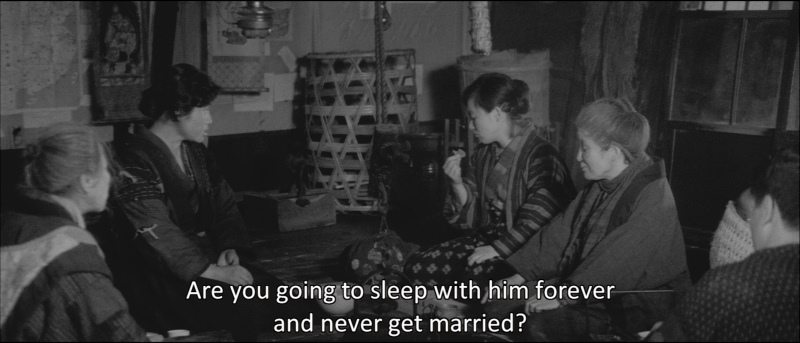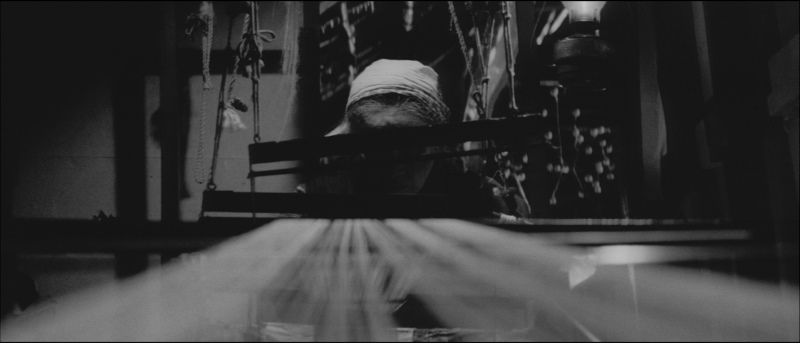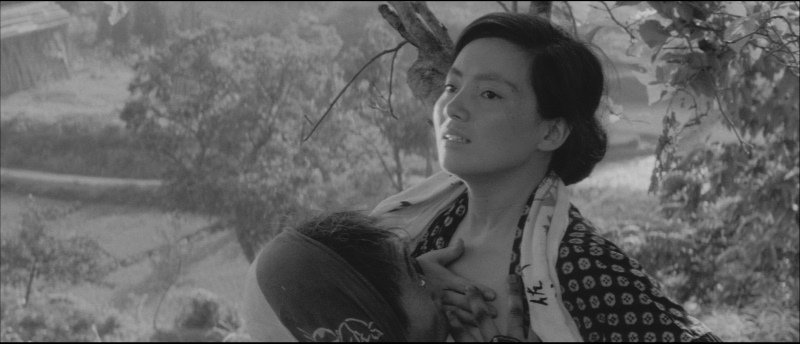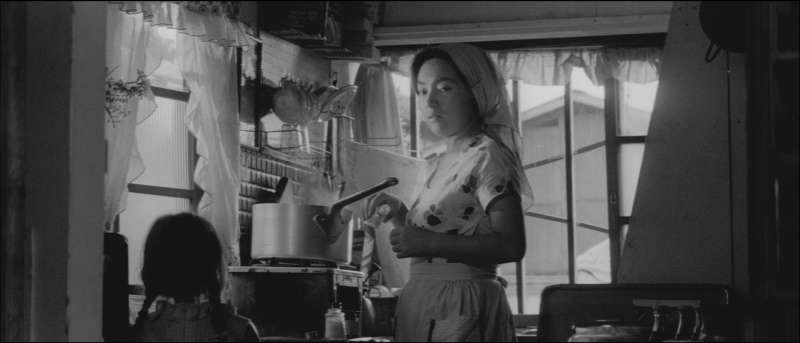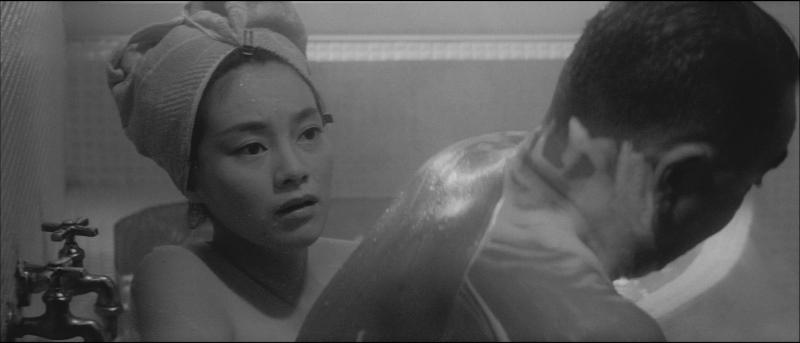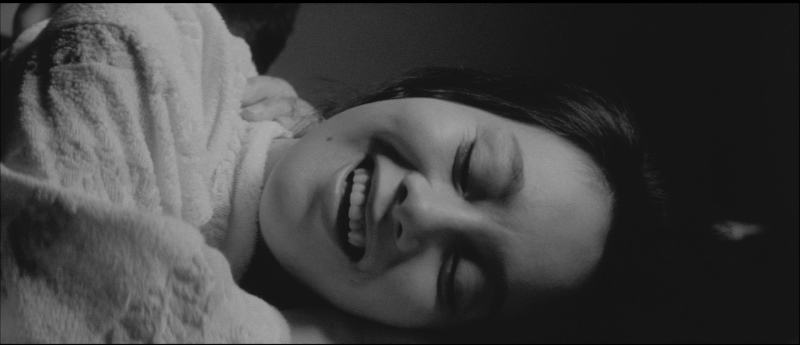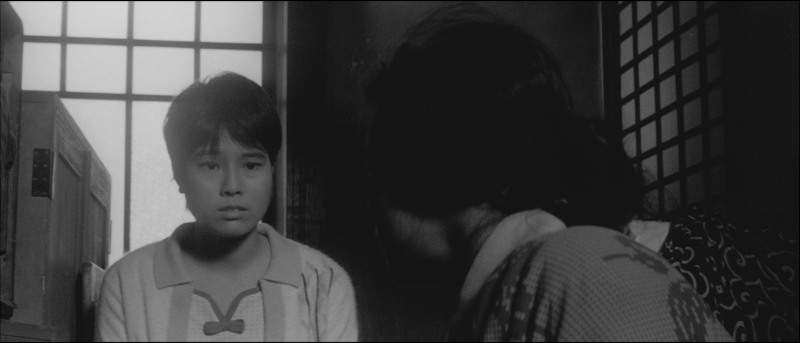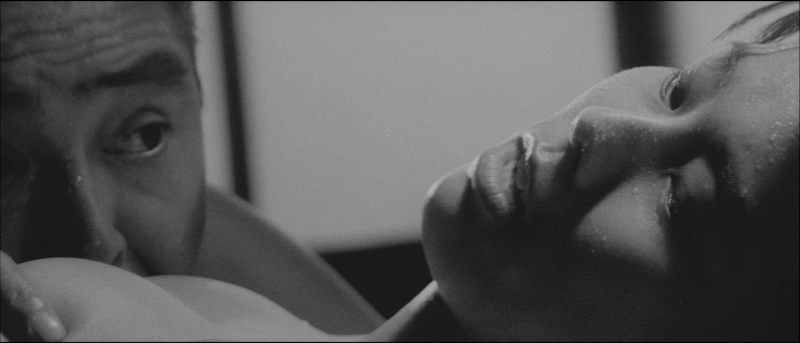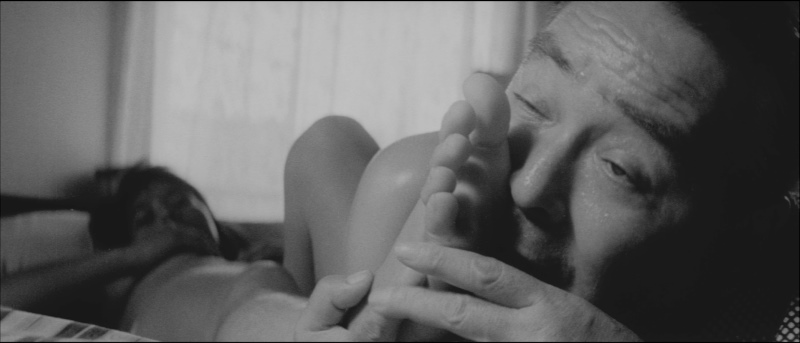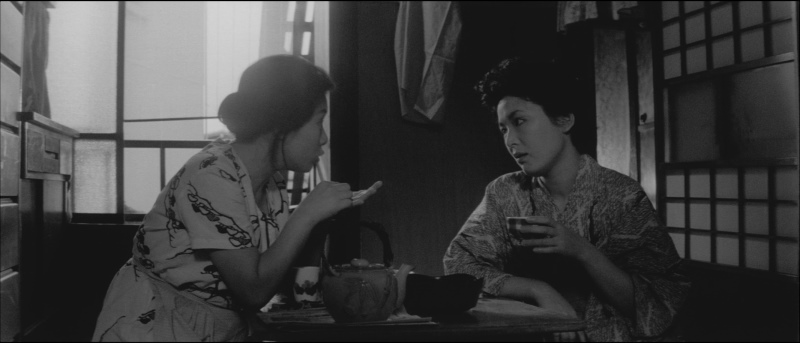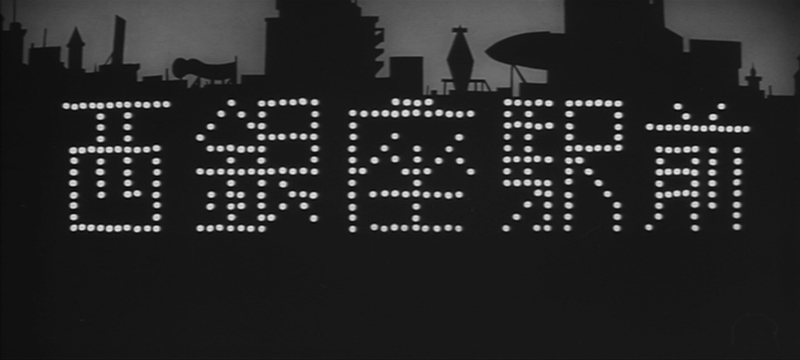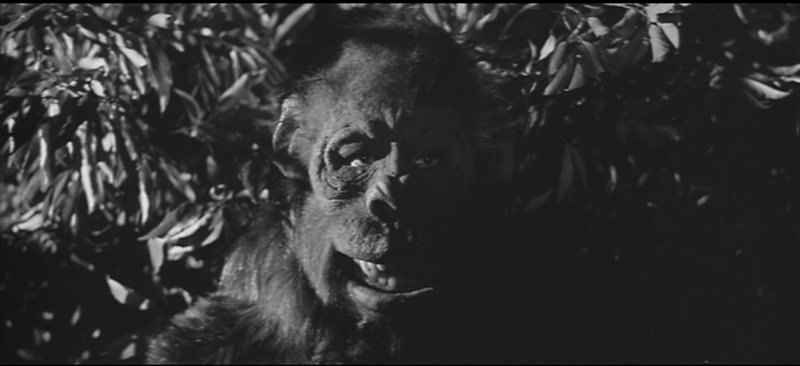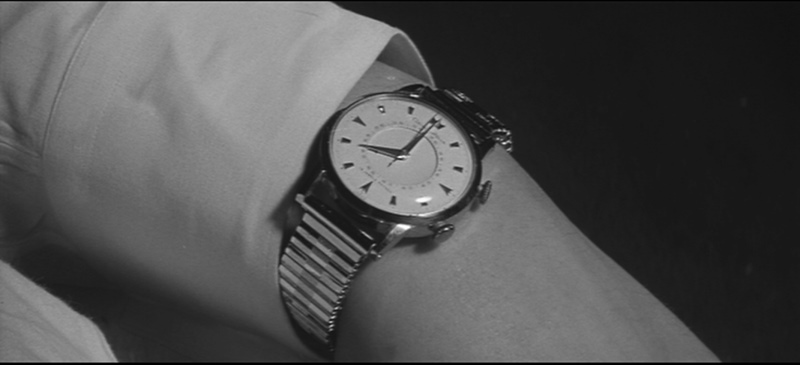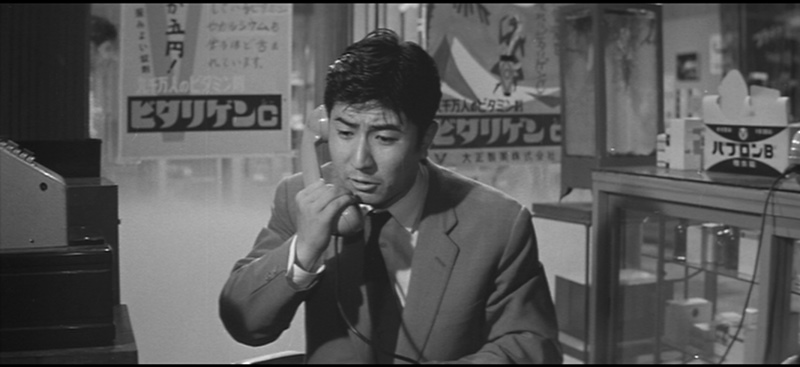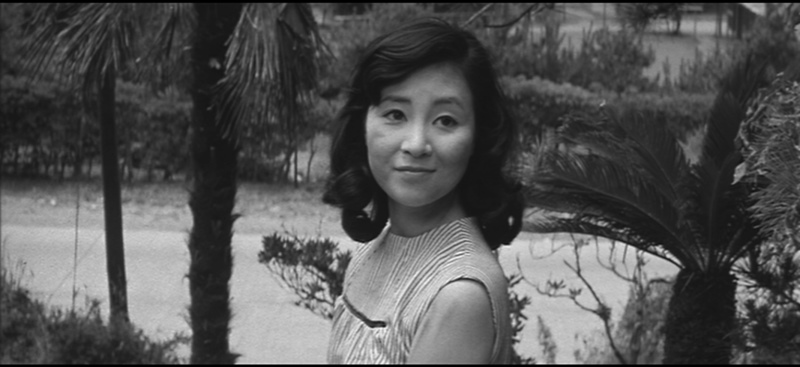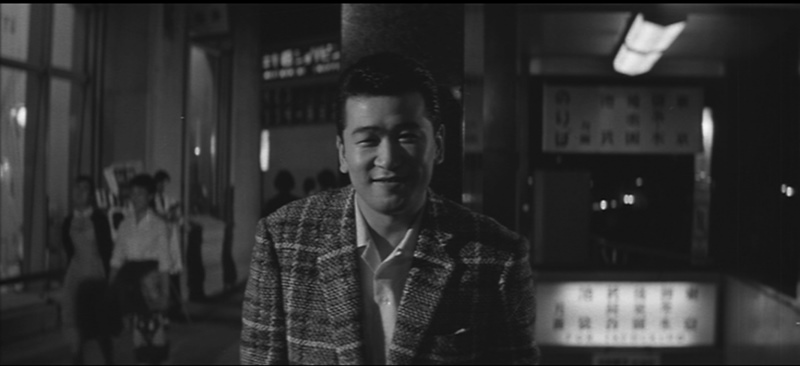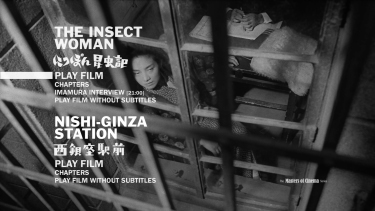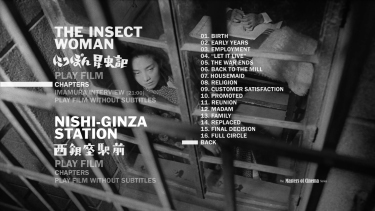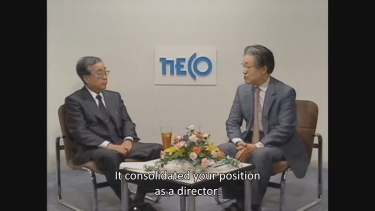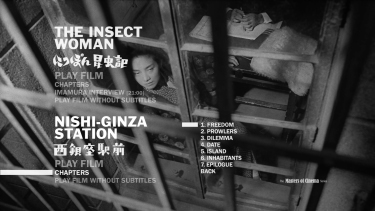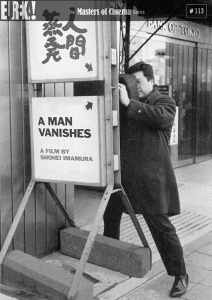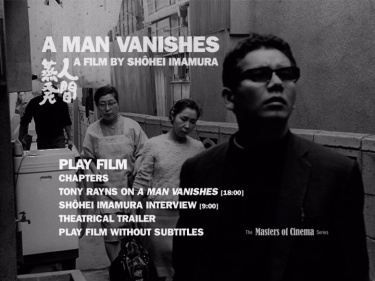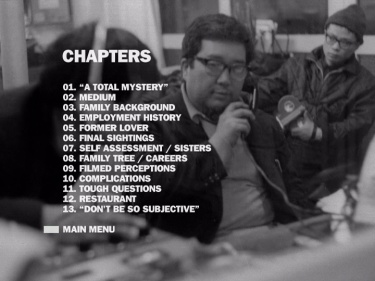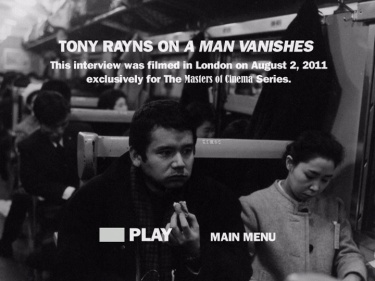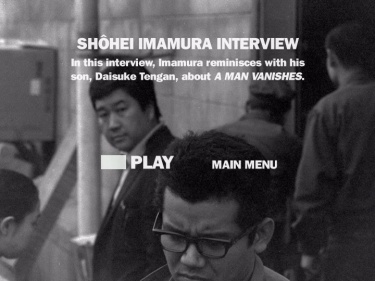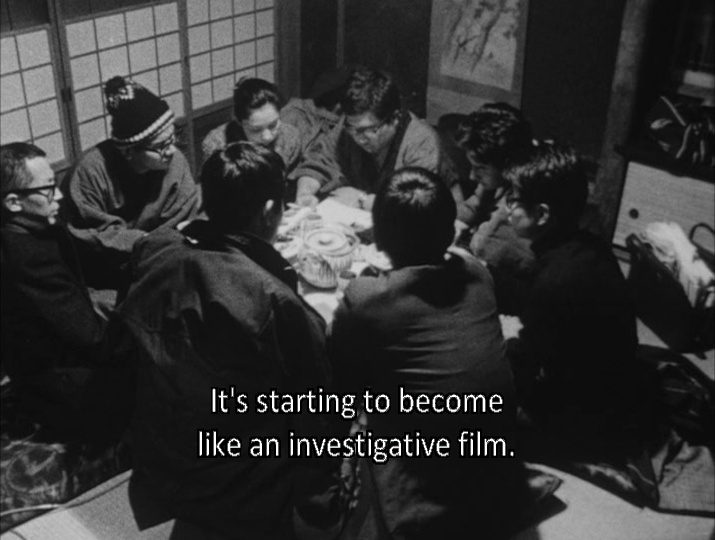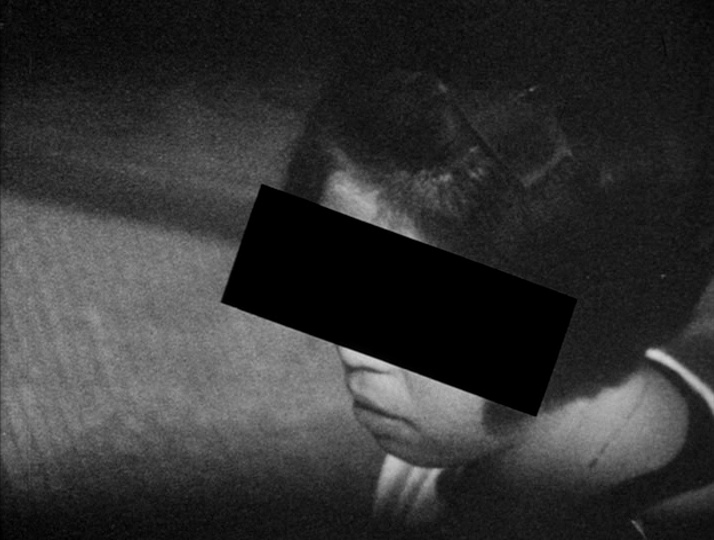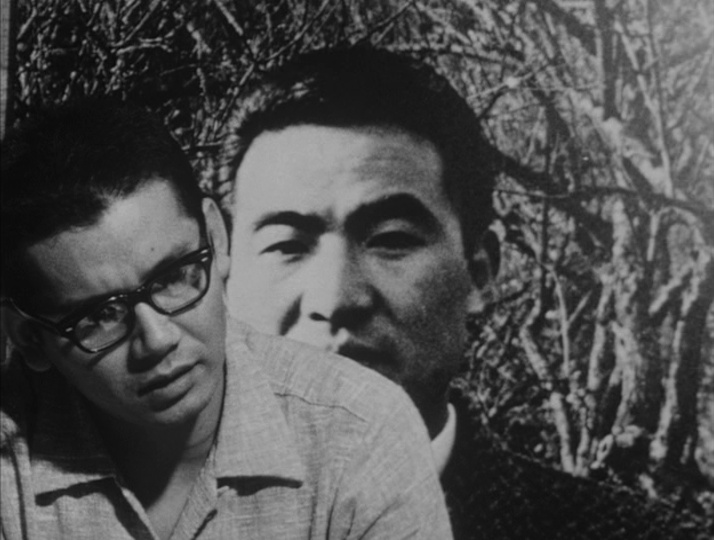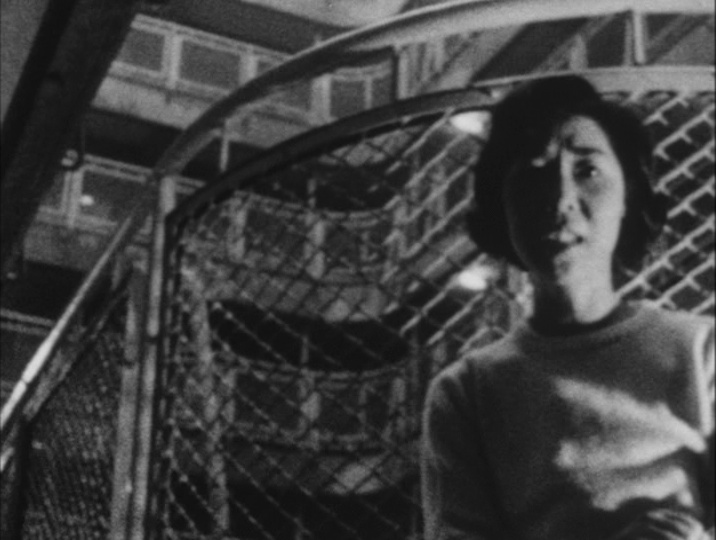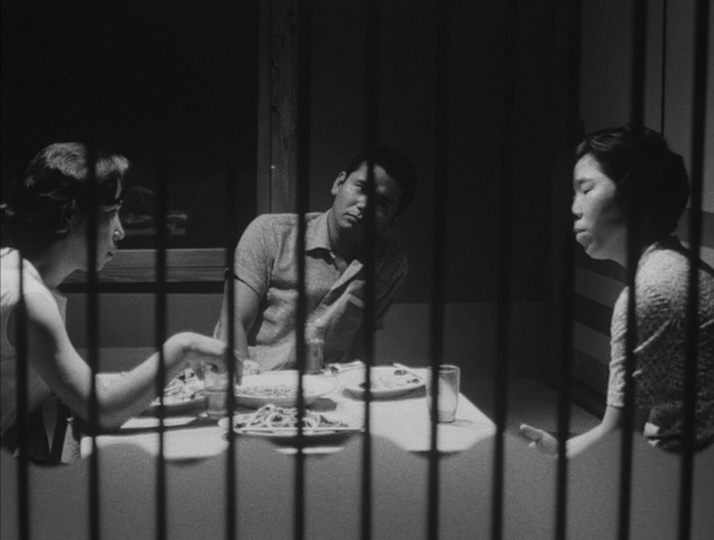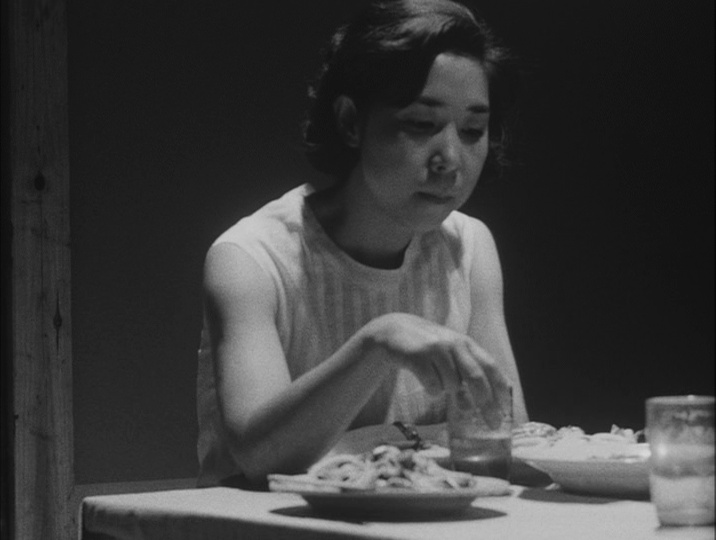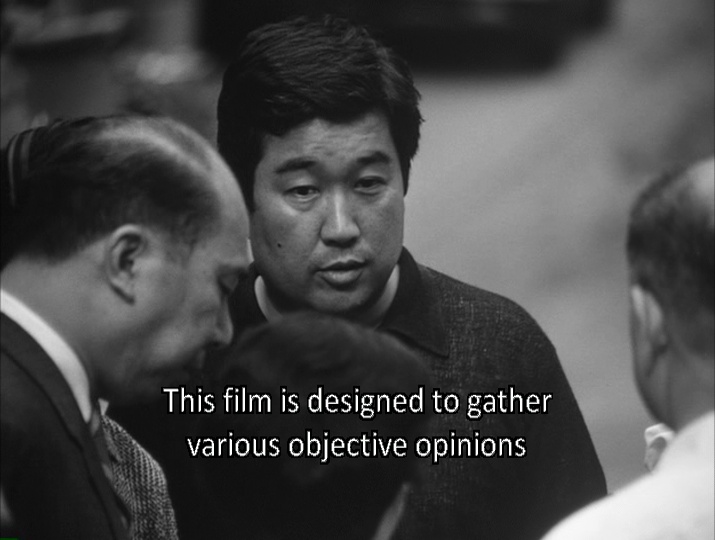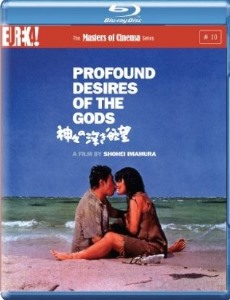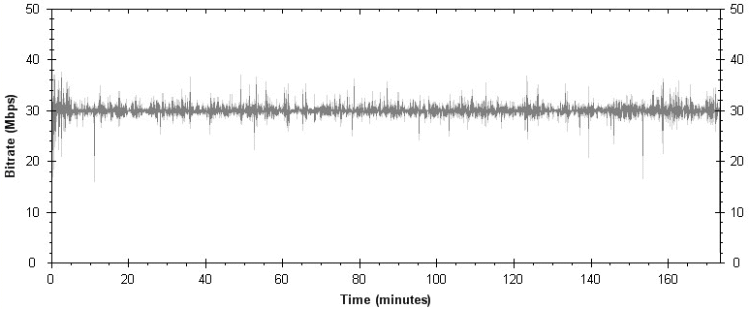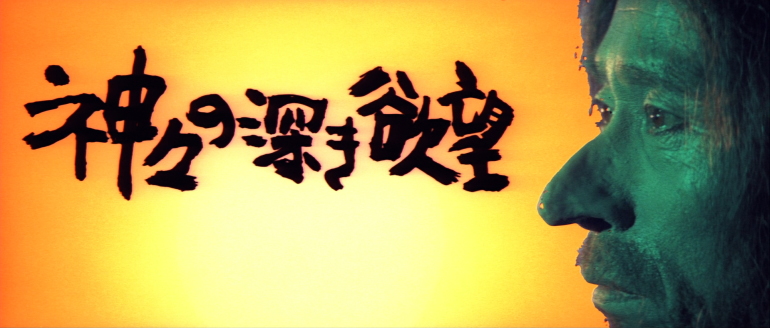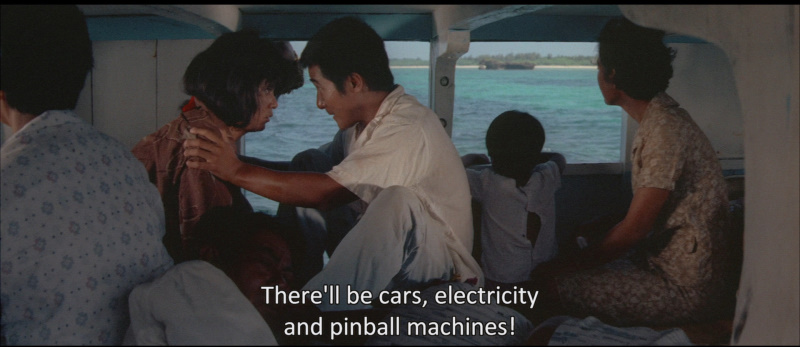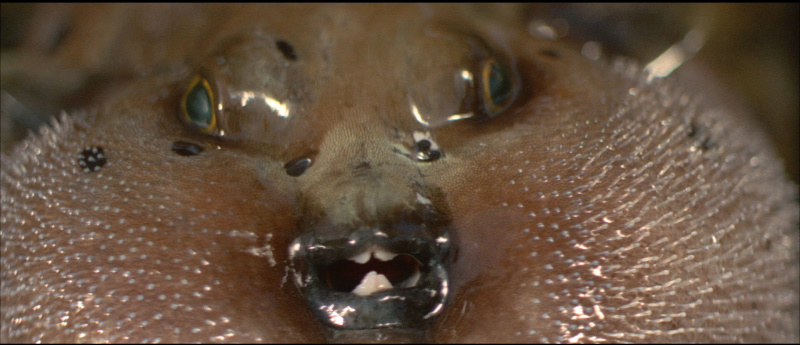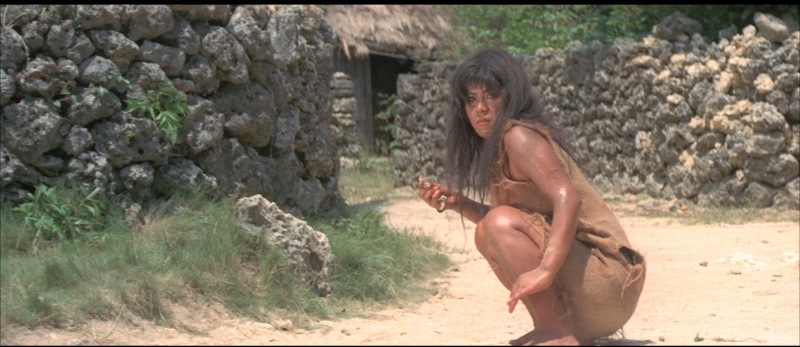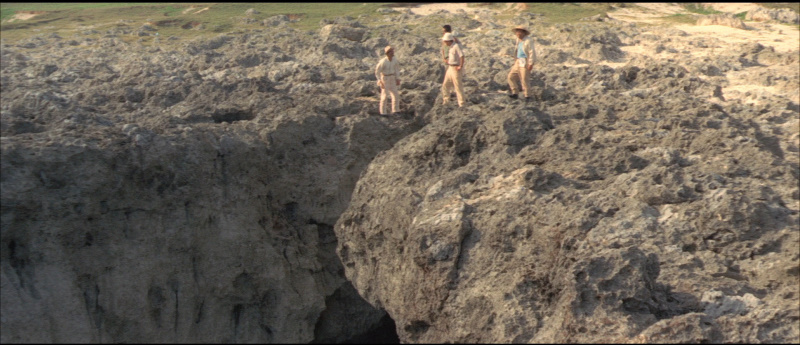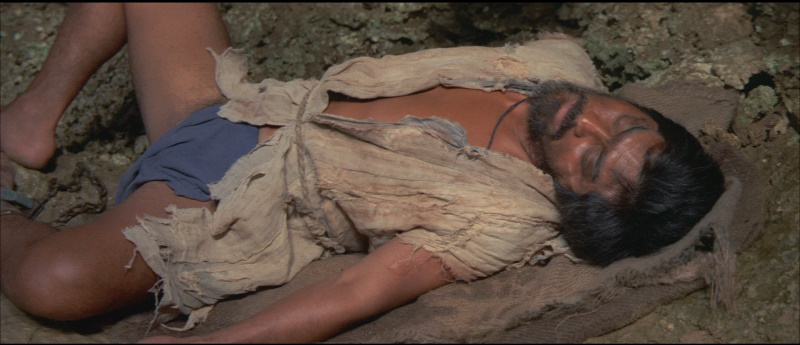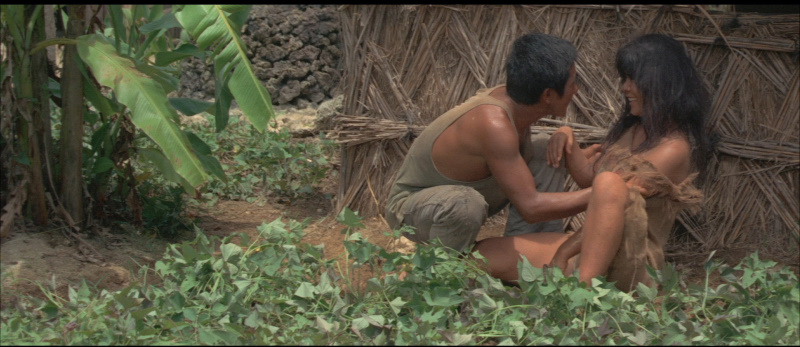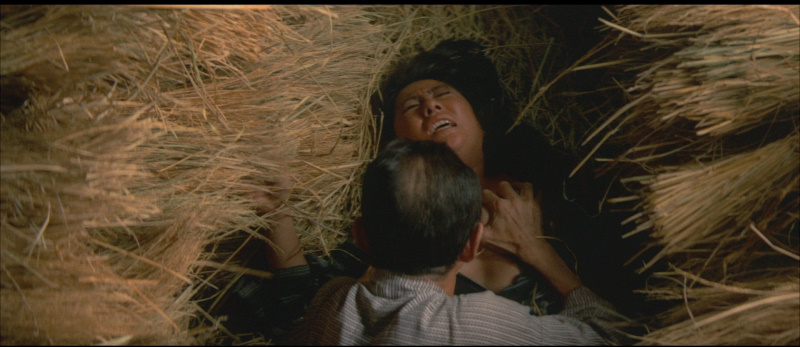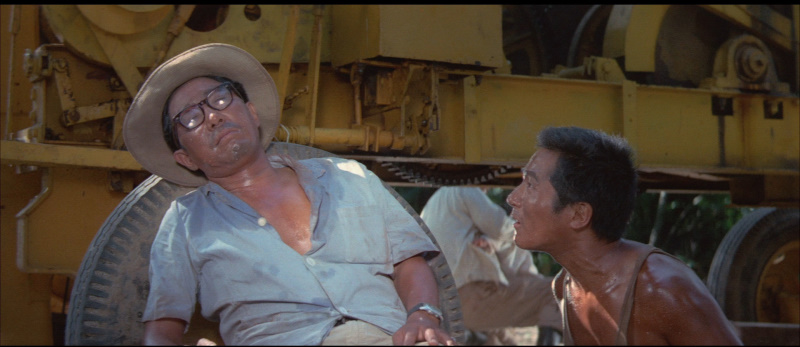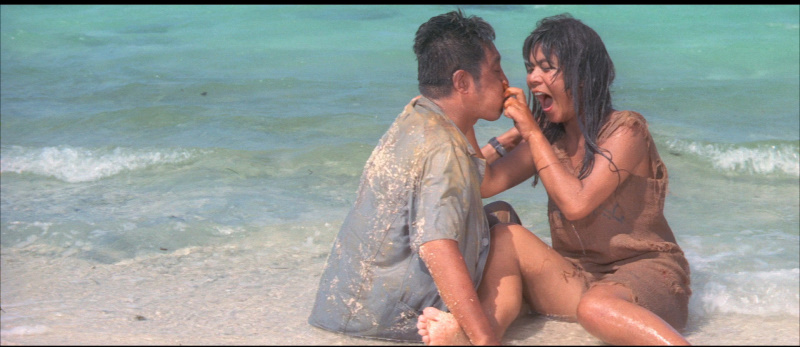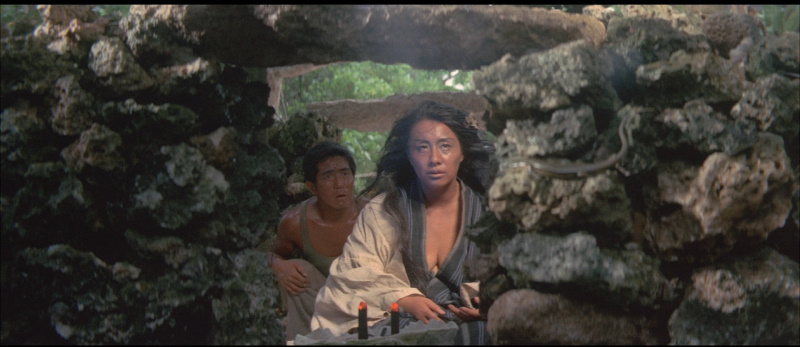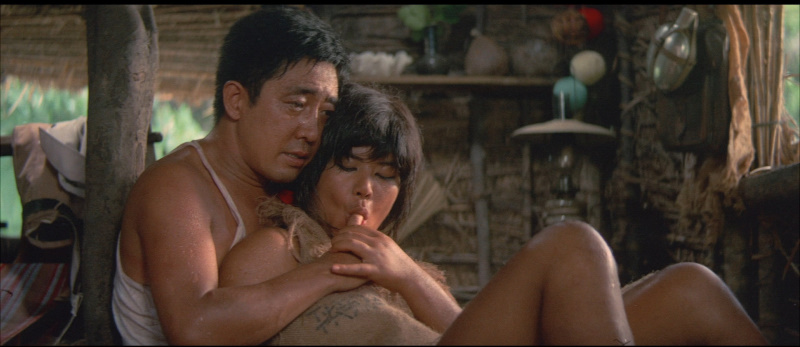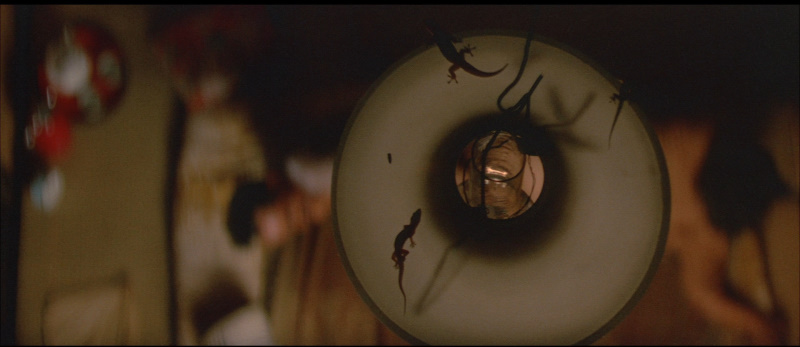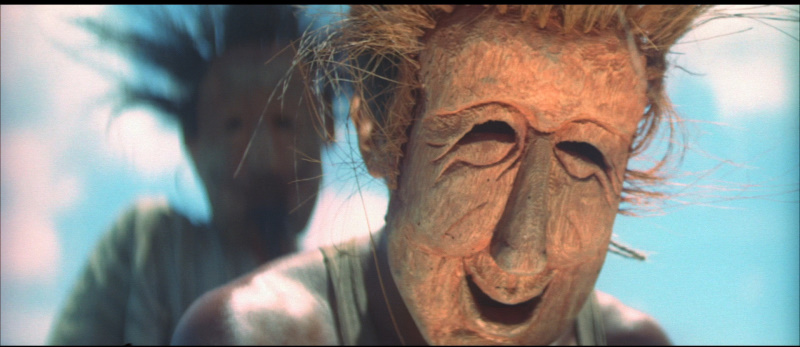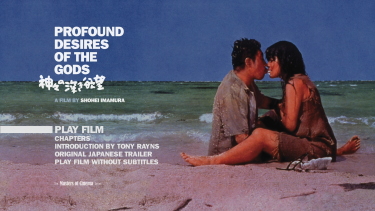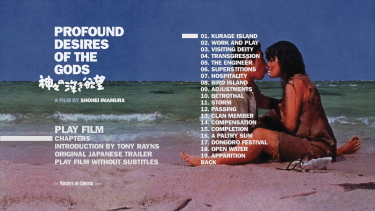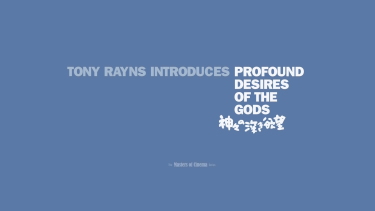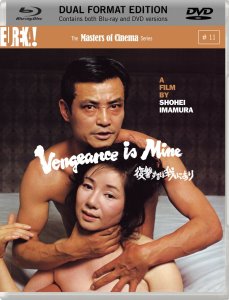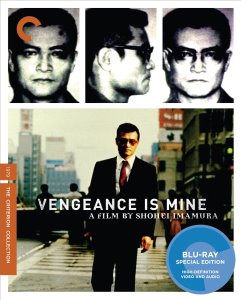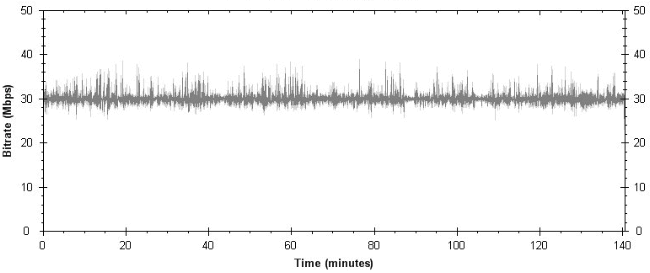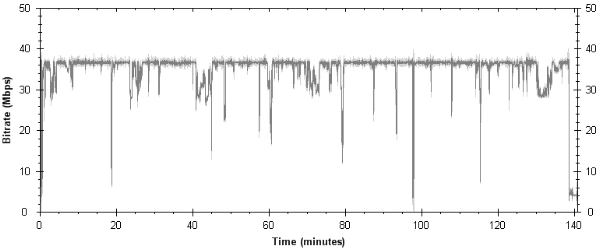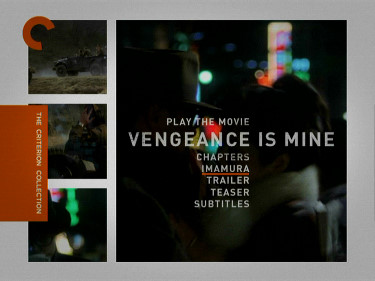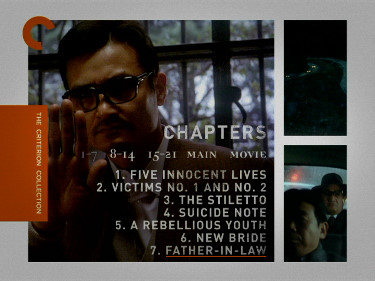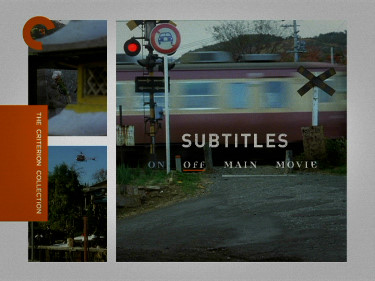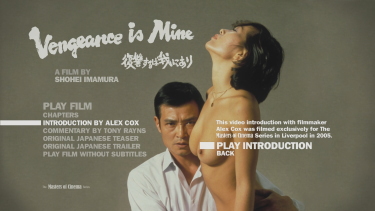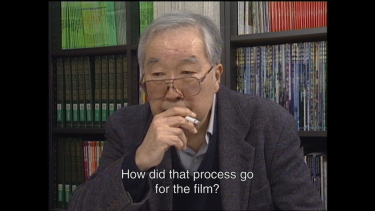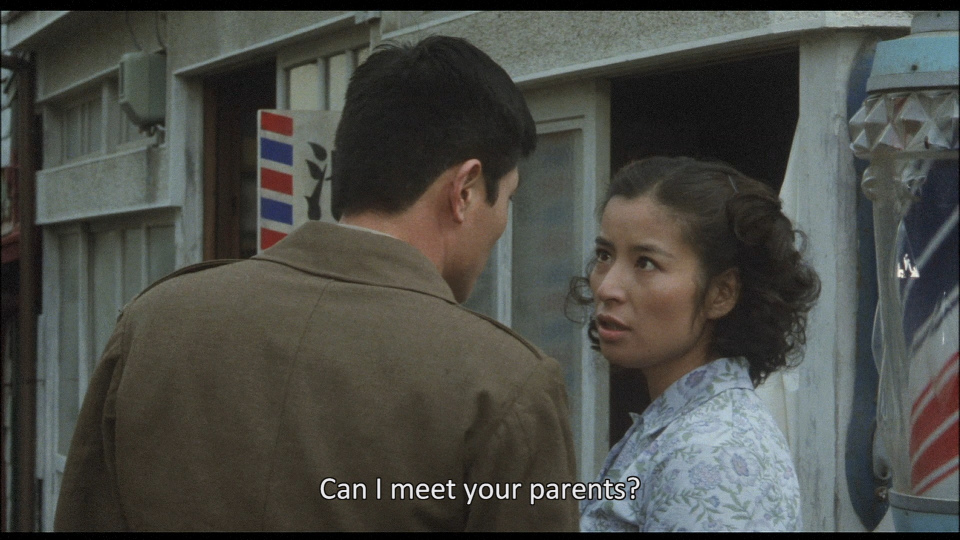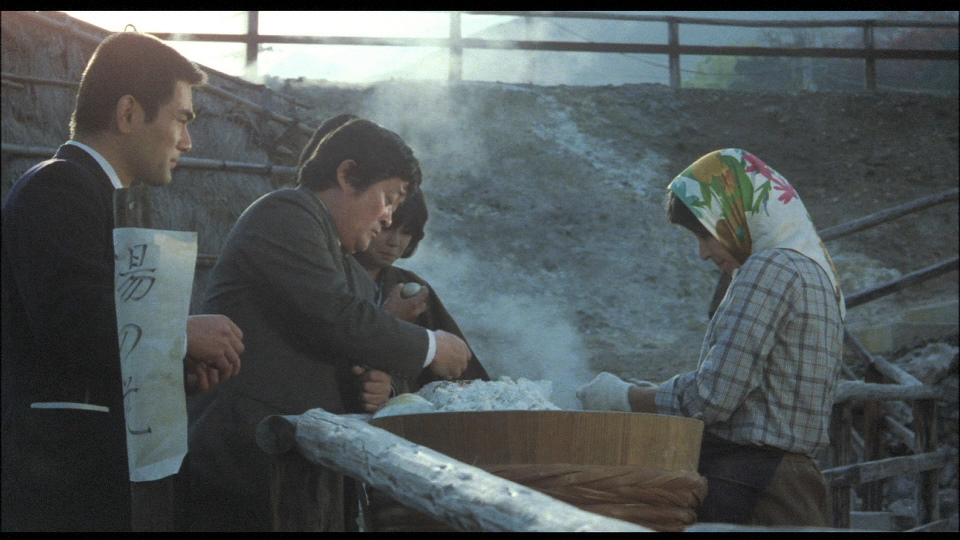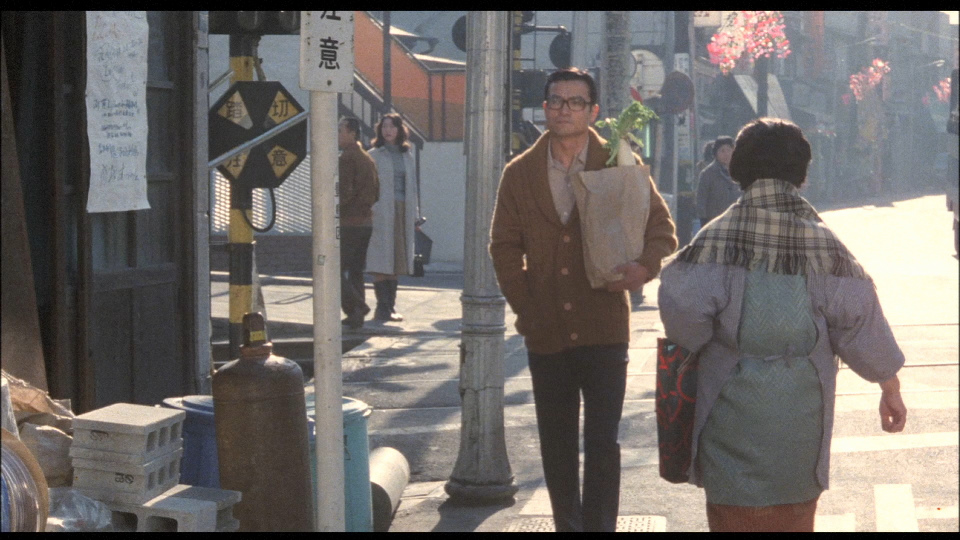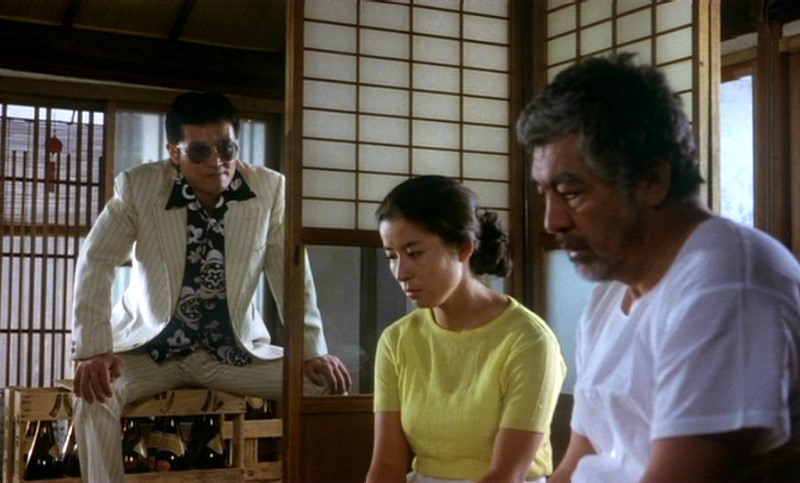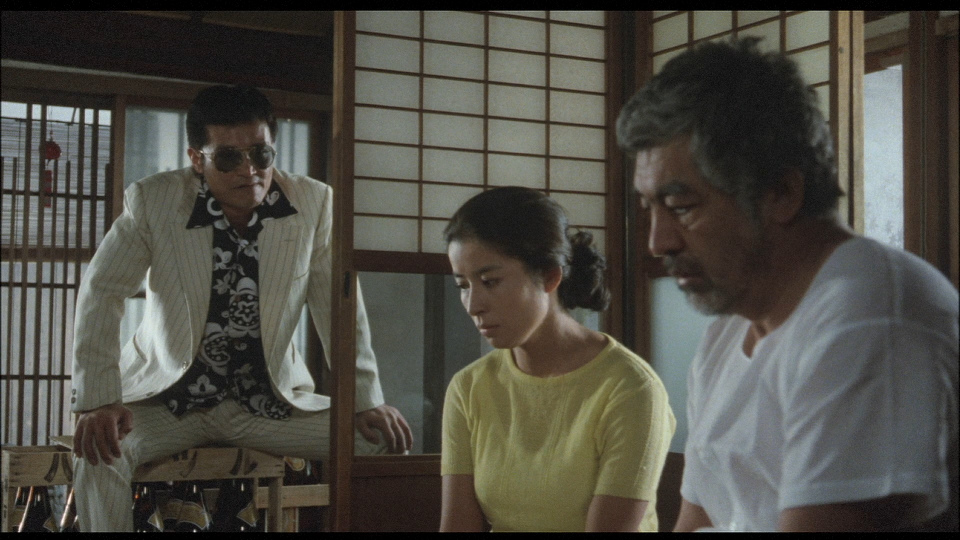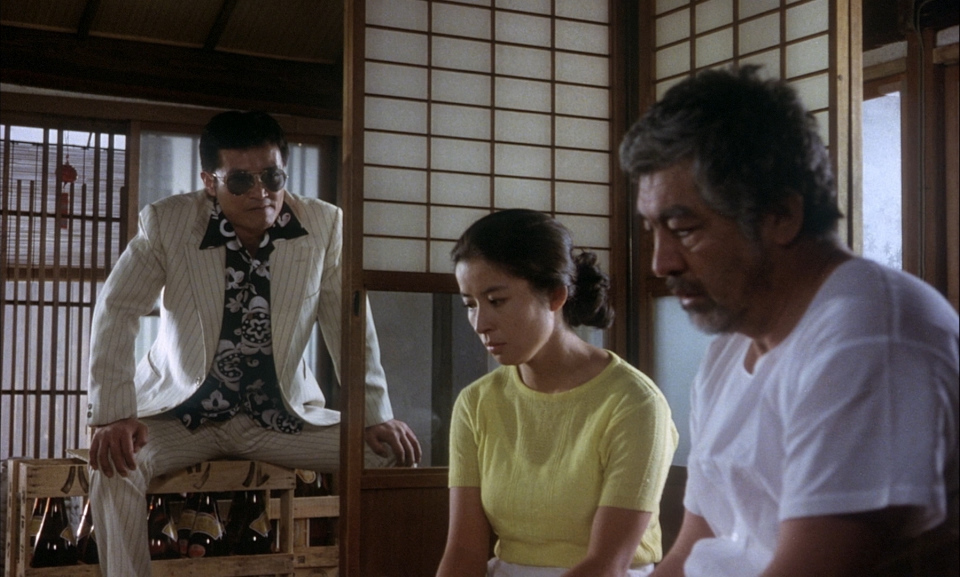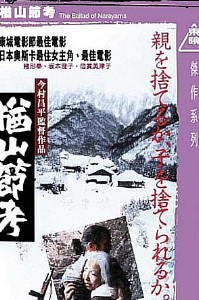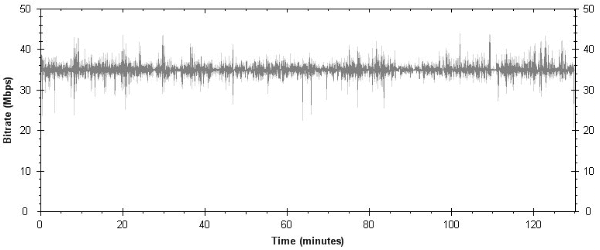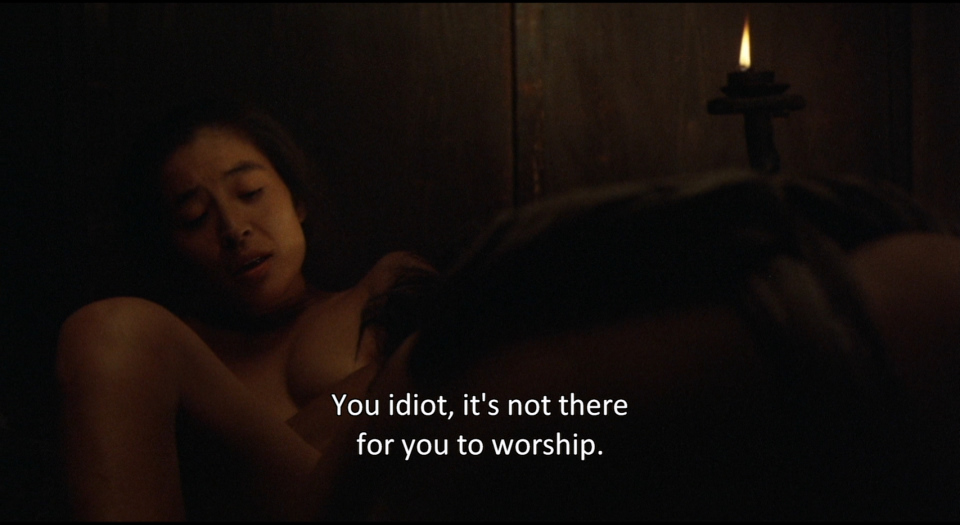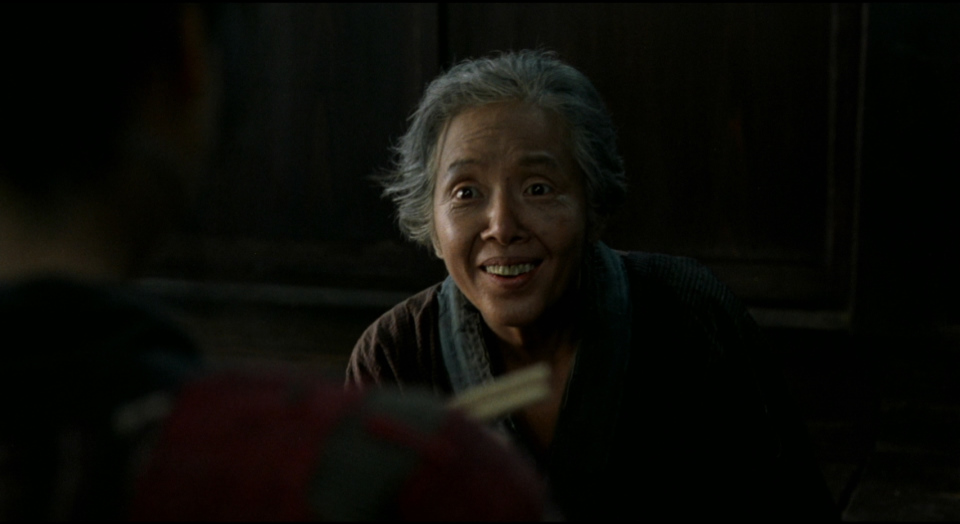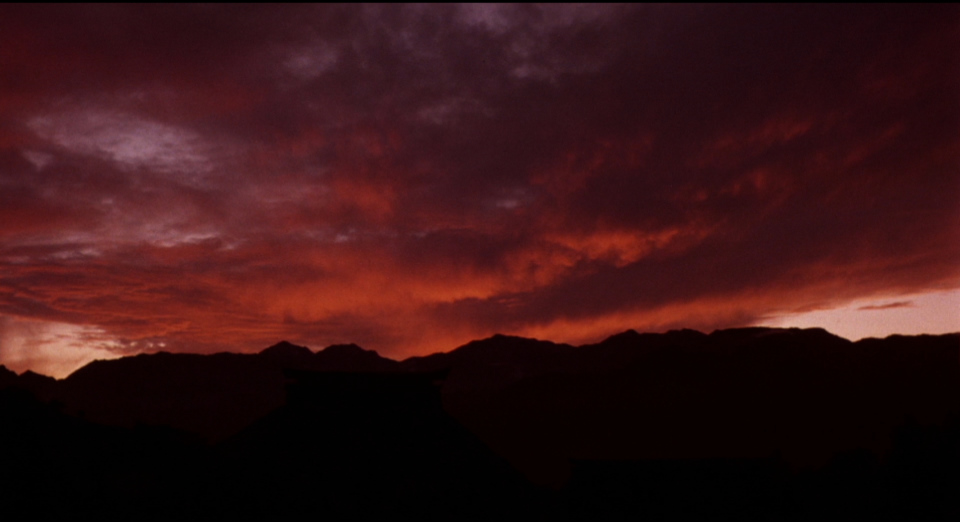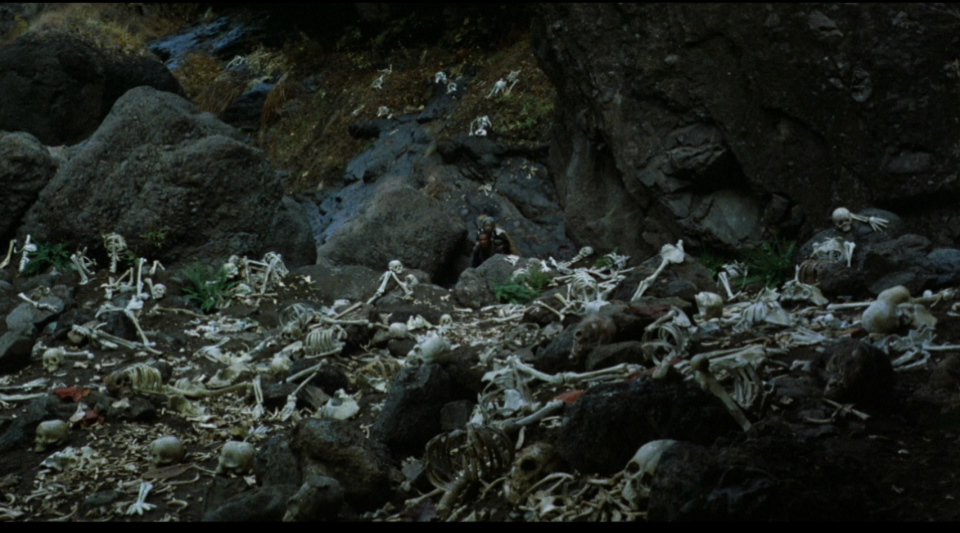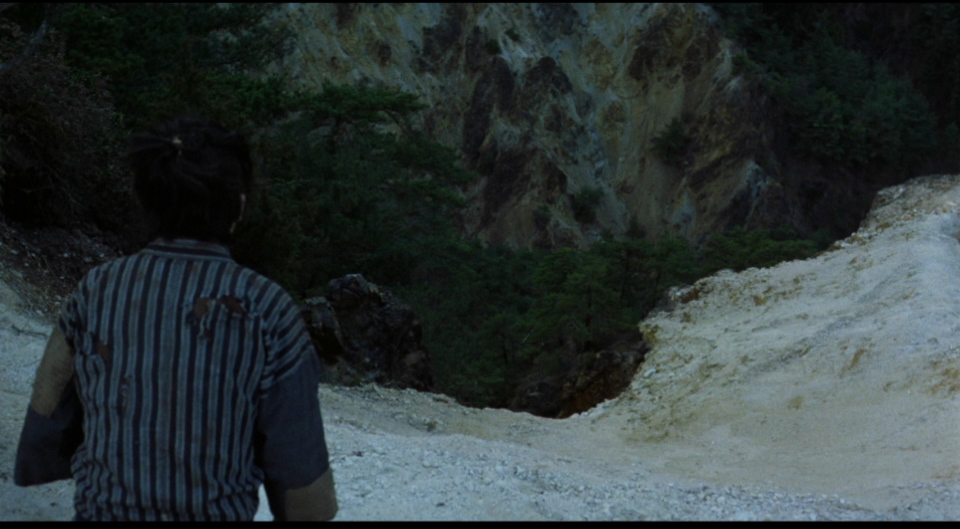![]()
![]()

![]()
![]()
|
Search DVDBeaver |
S E A R C H D V D B e a v e r |
|
|
The Shohei Imamura Masterpiece Collection [Blu-ray]
Stolen Desire (1958) Nishi Ginza Station (1958) Pigs and Battleships (1961)
The Insect Woman (1963)
A Man Vanishes (1967)
Profound Desires of the Gods (1968)
Vengeance is Mine (1979) The Ballad of Narayama (1983)
| Vengeance is Mine - Based on the true
story of Iwao Enokizu (Ken Ogata) and his murderous rampage which
sparked a 78-day nationwide manhunt, Shohei Imamura's disturbing gem
Vengeance Is Mine won every major award in Japan on the year of its
release. Both seducing and repelling with its unusual story and
grisly humour, Imamura uncovers a seedy underbelly of civilised
Japanese society. (Blu-ray & DVD) The Ballad of Narayama - A vividly realised inverse image of ''civilised'' society, The Ballad of Narayama presents a bracingly unsentimental rumination on mortality and an engrossing study of a community's struggles against the natural elements. It is one of the legendary director's deepest, richest works (for which he won his first Palme D'or), and ranks among the finest films of its decade. (Blu-ray & DVD) Profound Desires of the Gods - The culmination of Imamura's extraordinary examinations of the fringes of Japanese society throughout the 1960s, Profound Desires of the Gods was an 18-month super-production which failed to make an impression at the time of its release, but has since risen in stature to become one of the most legendary albeit least seen Japanese films of recent decades. (Blu-ray & DVD) The Insect Woman - Comparing his heroine, Tome Matsuki (played by Sachiko Hidari, who won the ''Best Actress'' award at the 1964 Berlin Film Festival for the role) to the restlessness and survival instincts of worker insects, the film is an unsparing study of working-class female life. Beginning with Tome's birth in 1918, it follows her through five decades of social change, several improvised careers, and male-inflicted cruelty. (Blu-ray & DVD) Pigs & Battleships - Imamura finally answered his true calling as Japanese cinema's most dedicated and brilliant chronicler of society's underbelly with the astonishing Pigs and Battleships [Buta to gunkan]. A riotous portrait of sub-Yakuza gangsters battling for control of the local pork business in the U.S. Navy-occupied coastal town of Yokosuka, Imamura conjures a chaotic world of petty thugs, young love, tough-headed women, and underworld hypochondria, with one of the most unforgettable climaxes ever filmed. (Blu-ray & DVD) A Man Vanishes - Is it a documentary that turns into a fiction? A narrative film from beginning to end? A record of improvisation populated with actors or non-actors (and in what proportion)? Is it the investigation into a true disappearance, or a work merely inspired by actual events? Even at the conclusion of its final movement, A Man Vanishes [Ningen j˘hatsu] mirrors its subject in deflecting inquiries into the precise nature of its own being. (DVD only) Also featuring Nishi-Ginza Station & Stolen Desire. |
|
Pigs and Battleships [Blu-ray]
(Shohei Imamura, 1961)
Review by Gary Tooze
Production: Theatrical: Nikkatsu Video: Masters of Cinema Spine # 21
Disc: Region: 'B' (as verified by the Momitsu region FREE Blu-ray player) Pig and Battleships Runtime: 1:47:50.922 Stolen Desires Runtime: 1:32:16.572 Disc Size: 49,368,042,443 bytes Pig and Battleships Size: 30,453,190,656 bytes Stolen Desires Size: 18,870,650,880 bytes Pig and Battleships Video Bitrate: 34.99 Mbps Stolen Desires Video Bitrate: 24.99 Mbps Chapters: 19 / 14 Case: Standard Blu-ray case Release date: June 27th, 2011
Video: Aspect ratio: 2.35:1 Resolution: 1080p / 23.976 fps Video codec: MPEG-4 AVC Video
Audio: Pig and Battleships: DTS-HD Master Audio Japanese 864 kbps 2.0 / 48 kHz / 864 kbps / 16-bit (DTS Core: 2.0 / 48 kHz / 512 kbps / 16-bit) Stolen Desires:
DTS-HD Master Audio Japanese 903 kbps 2.0 / 48 kHz / 903
kbps / 16-bit (DTS Core: 2.0 / 48 kHz / 512 kbps /
Subtitles: English, none
Extras: • Stolen Desire [Nusumareta yokuj˘]• Booklet featuring essays on both films by Tony Rayns and rare stillsDual Format DVD of features included
Bitrate:
Description: A dazzling, unruly portrait of postwar Japan, Pigs and Battleships details, with escalating absurdity, the desperate power struggles between small-time gangsters in the port town of Yokosuka. The film is shot in gorgeously composed, bustling cinemascope. *** With this, his fifth film, Sh˘hei Imamura finally answered his true calling as Japanese cinema's most dedicated and brilliant chronicler of society's underbelly with the astonishing Pigs and Battleships [Buta to gunkan]. A riotous portrait of sub-Yakuza gangsters battling for control of the local pork business in a U.S. Navy-occupied coastal town (Yokosuka), Imamura conjures a chaotic world of petty thugs, young love, tough-headed women, and underworld hypochondria, with one of the most unforgettable climaxes ever to grace the screen. Featuring dynamic black-and-white 'Scope cinematography, the director's typically sly sense of social commentary, and a host of outstanding performances (including Jitsuko Yoshimura from Onibaba), Pigs and Battleships immediately became a cornerstone of the Japanese New Wave and remains perhaps Imamura's most sheerly entertaining work. Pigs and Battleships is a much-loved, major classic of Japanese cinema, and part of the established canon along with Seven Samurai, Onibaba, Kwaidan, Ugetsu monogatari, and Tokyo Story, etc.
Also included Imamura’s 1958 rarely-seen debut feature, Stolen Desire [Nusumareta yokuj˘]:
Shohei Imamura's first feature (1958), shot in black-and-white 'Scope, deals with a form of working-class Kabuki that attracted him as a college student, but its story about an itinerant troupe performing a striptease version of the form near Osaka isn't very inspired. Nevertheless, Imamura characteristically finds some vitality in vulgarity—though his more prosaic working title, “Tent Theatre,” was rejected by the production company. Excerpt from Jonathan Rosenbaum at the Chicago Reader located HERE
The Film: In post-War Japan, drunk American soldiers flood the streets looking for prostitutes - meanwhile, the Japanese Yakuza is doing its own part to damage the honor of the country via the black market. Imamura does a fine job of not simply pointing the finger at the Americans, but also criticizing his own people, but the movie is also exhaustingly moral, slightly hysterical and awkwardly employs symbolic elements. That Imamura went from something as simple as this to significantly more nuanced works like Vengeance Is Mine and Dr. Akagi shows his growth. Excerpt from The Cinematic Threads located HEREImamura's fifth film kicks off with hordes of uniformed American sailors running rampant through the neon lit streets of Yokosuka, and closes with a stampede of pigs doing much the same: a rather wonderful bracketing device pinpointing the twin poles of the slum town's economic life. Kinta (Nagato), like every other young punk in town, has his heart set on making a favourable impression with the gangsters, whose main racket involves exploiting the local pig trade. By contrast his girlfriend Haruko (Yoshimura) is one of the few women to think twice about prostituting herself to the steady influx of Yanks flush with money and booze. She wants them both to quit town while they can. Around this familiar set-up Imamura spins a hectic, furious portrait of a melting pot of deadend low-lives, which, with its restless tracking and panning shots, high contrast 'Scope photography and gothic secondary characters, recalls the corrupt, sweaty universe captured by Welles in Touch of Evil. Imamura plays fast and loose with the plotting (he likes his films 'messy'), but if some of the finer narrative details are opaque, the over-arching vision of life as a meat market is abundantly clear. Excerpt from TimeOut Film Guide located HEREImage : NOTE: The below Blu-ray captures were taken directly from the Blu-ray disc. For Pigs and Battleships the Masters of Cinema appears lighter than the Criterion rendition in their SD Boxset Pigs, Pimps, & Prostitutes: 3 Films by Shohei Imamura. The Blu-ray contains a thick, heavy looking image that produces a clean and consistent presentation - one that I suspect is accurate to its theatrical roots. The softness is probably a production factor but there is some notable detail in close-ups. This Blu-ray has an authentic film-like feel without any distinguishing black-marks. Sharing the disc is Imamura's debut feature via the Nikkatsu studio; Stolen Desires. It is less technically robust than the Pigs and Battleships transfer with a smaller bitrate and has some issues of compression. It is darker in comparison, but visually is shares a consistency that easily allows one to settle into the presentation. There is some contrast fluctuation but nothing that deterred my viewing experience. This worked for me as a cool Double-Bill. The image of both is not modern-era sharp - but it would be out of the ordinary if it was. I was very satisfied with the digital look of both films.
CLICK EACH BLU-RAY CAPTURE TO SEE ALL IMAGES IN FULL 1920X1080 RESOLUTION
Stolen Desires
Audio :The flatness of the audio reflects the original quality and both films have a DTS-HD Master 2.0 channel at 864 kbps in Japanese to help accentuate its authenticity. It has no impressive qualities excepting that, like the video, it supplies a clean, consistent and reasonably trouble-free replication of the film's sound. Hence, there is no range or depth - and few instances in the films that would require it. There are professionally rendered optional English subtitles and my Momitsu has identified it as being a region B-locked.
Extras : Stolen Desires - as an extra - is a wonderful inclusion. Beyond that is a booklet featuring essays on both films by Tony Rayns and rare stills as well as being a Dual-Format Edition containing a separate disc SD-DVD of the two features.
BOTTOM LINE: Gary Tooze June 29th, 2011
|
|
The Insect Woman aka Nippon konchűki [Blu-ray]
(Sh˘hei Imamura, 1963)
Review by Gary Tooze
Production: Theatrical: Nikkatsu Video: Masters of Cinema Spine #22
Disc: Region: B-locked (as verified by the Momitsu region FREE Blu-ray player) Runtime: 2:02:51.822 Disc Size: 47,430,128,273 bytes Feature Size: 35,105,955,840 bytes Nishi-Ginza Station Size: 8,925,911,040 bytes Video Bitrate: 34.99 Mbps Chapters: 16 Case: Transparent Dual-Format Blu-ray case Release date: February 21st, 2011
Video: Aspect ratio: 2.35:1 Resolution: 1080p / 23.976 fps Video codec: MPEG-4 AVC Video
Audio: DTS-HD Master Audio Japanese 1281 kbps 2.0 / 48 kHz / 1281 kbps / 24-bit (DTS Core: 2.0 / 48 kHz / 512 kbps / 24-bit)
Subtitles: English, none
Extras:
• Newly restored
high-definition master of The Insect Woman Enclosed DVD of the Feature
Bitrate:
Description: “My heroines are true to life – just look around you at Japanese women. They are strong, and they outlive men,” director Sh˘hei Imamura once observed. And so an audacious, anthropological approach to filmmaking came into full maturity with the director’s vast 1963 chronicle of pre- and post-war Japan, The Insect Woman [Nippon-konchűki, or An Account of Japanese Insects].
The Film: Born in a rural farming village in 1918, TomÚ survives decades of Japanese social upheaval, as well as abuse and servitude at the hands of various men. Yet Shohei Imamura, ever the cinematic “entomologist,” refuses to make a victim of her, instead observing TomÚ (played by the extraordinary Sachiko Hidari) as a fascinating, pragmatic creature of twentieth-century Japan. A portrait of opportunism and resilience in three generations of women, The Insect Woman is Imamura’s most expansive film, and TomÚ his ultimate heroine. Shohei Imamura's darkly elegant 1963 film about a rural Japanese woman drawn into a life of prostitution compares the lead character to an insect for her persistence in the face of adversity—it even begins with an insect climbing a hill. At the same time Imamura presents the social forces that shape his characters' actions: the woman's difficult family life (including an incestuous relationship with a stepfather) and the economic hardships following World War II pull her into the streets but also help elevate her to become a powerful madam. The insect metaphor extends into the film's rhythms: the movements of the woman—and of groups of characters seen in tableaux as they eat or talk—often seem as jittery and reflex-driven as a bug's. But the film is stylistically muddled, many scenes ending in freeze-frames that sometimes comment on the narrative by leaving characters in midstream but other times seem affected. Excerpt from Fred Camper's review at The Chicago Reader located HEREImage : NOTE: The below Blu-ray captures were taken directly from the Blu-ray disc. The Insect Woman was offered on DVD in 2009 from Criterion in their Pigs, Pimps, & Prostitutes: 3 Films by Shohei Imamura boxset (reviewed HERE). we have compared one frame at the very bottom of this review. The Masters of Cinema is brighter, shows more detail and looks more like film. The Blu-ray looks rich with one brief instance of more noticeable damage but otherwise is similar to other Japanese film-to-1080P we have seen from the 60's. The transfer supports the texture and I see no signs of manipulation. There is no distracting noise. There are sequences of still images in The Insect Woman that generally look the same visual level as the live-action. The transfer of Nishi-Ginza Station is of similar quality - progressive, relatively clean - perhaps a shade darker. It's bitrate is smaller.
CLICK EACH BLU-RAY CAPTURE TO SEE ALL IMAGES IN FULL 1920X1080 RESOLUTION
Audio :The DTS-HD Master 2.0 channel track at 1281 kbps does a competent job of exporting the film's original Japanese dialogue. Aside from that it is largely inconsequential without requirements for dynamic depth. There are optional English subtitles and m y Momitsu has identified it as being a region B-locked.
Extras : Aside from the inclusion of Imamura's 51 minute 1958 feature Nishi-Ginza Station, we also get a 20-minute video conversation about The Insect Woman between Imamura and critic Tadao Sat˘ (in 1080i) with optional English subtitles. The package contains a 36-page liner notes booklet featuring two new essays by film scholar Tony Rayns on both films, alongside rare archival imagery. Being Dual-Format the package contains a DVD of the feature.
BOTTOM LINE: Gary Tooze February 2nd, 2011 |
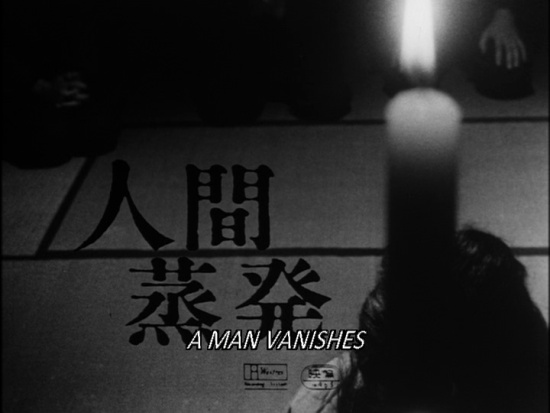
(aka "Ningen J˘hatsu" )
directed by Sh˘hei Imamura
Japan 1967
|
Oshima Tadeshi is one of the 91,000 citizens to disappear into thin air yearly in Japan. A film crew has selected the seemingly average case of this seemingly average man - a plastics salesman from the country taken in by his employers as family - case as their focus and find several possible reasons as to why he might have disappeared, but no definitive answer. He had embezzled a substantial sum of money from his company two years before, but it had been paid back by docking his paycheck and he was not fired. Could he still be stricken by guilt? In addition to his fiancee Yoshie (nicknamed "The Rat" by the filmmakers) who has joined the film crew to find him, he had a mistress who might have gotten pregnant by him. There is also the suspicion of a secret relationship between Oshima and Yoshie's timid older sister Sayo (a failed geisha), and inquiry into this thread reveals that not everyone is quite who they present themselves to be in front of the camera. Although distributed theatrically by Nikkatsu, A MAN VANISHES was Shohei Imamura's first independent production for his newly founded Imamura Films in collaboration the Arts Theatre Guild (an offshoot of Towa that had been geared towards the distribution of foreign films in Japan, and had just started moving into low budget feature film production). Although it presents itself as an investigative film about the whereabouts of Oshima, Imamura reveals himself to be far more interested in the portrait of the character that emerges through the interviewees (is he a ladies man or "a little wet"? a suave salesman or incompetent? youthful or middle-aged? guilt-stricken or fun-loving? was he running from obligation or his own fears of inadequacy?), sometimes through the use of hidden cameras and tape recorders (the wild sound of these sequences was impossible to synchronize to the image) and censor bars over the faces of those who did not consent to filming. The film actually becomes more interesting when it starts to ferret out the character of Yoshie - who Imamura claims used them and the camera as much as they used her - far from the demure and fragile persona she presents to the camera (although apparently far less monstrous than she actually was off-camera). Imamura weaves the fictionalized narrative of the documentary not only through the selection of images and sound bytes - not to mention the minimalist musical interjections of Toshir˘ Mayuzumi (REFLECTIONS IN A GOLDEN EYE) - but also by asking leading questions that allow him to pursue threads of his own interest (although one gradually discovers how much more adeptly Yoshie is at this method of eliciting desired responses). Despite the contradictory viewpoints and consultations of mediums, this is no RASHOMON, and Imamura's reveals of the constructed fiction of the documentary feel a shade academic (through heated exchanges in a room revealed to be constructed on a soundstage, and re-enactments on location with the actual participants), as does the summation that no one perspective can encompass the whole story; and yet, the viewer's mind does ping back and forth between the fiction of the filming and the reality that is being captured. When Imamura states that the crew's focus should return to determining Oshima's whereabouts, it is actually a clever device to end the film since they arrive at a point where they are only going in circles. A MAN VANISHES may have been scarce in distribution abroad because it possesses neither artfilm gloss or exploitation glitz, but it presents a frank and seedy view of Japan far more palpably than many of Nikkatsu's higher profile pictures. |
Posters
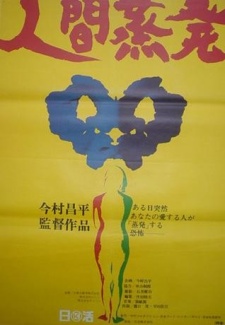 |
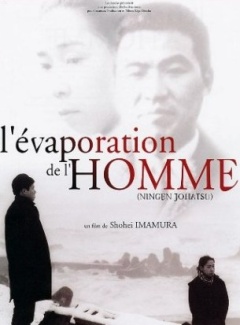 |
Theatrical Release: 8 July 1967 (Japan)
Reviews More Reviews DVD Reviews
DVD Review: Eureka Video (Masters of Cinema) - Region 0 - NTSC
Big thanks to Eric Cotenas for the Review!
| DVD Box Cover |
|
|
| Distribution |
Eureka Video Region 0 - NTSC |
|
| Runtime | 2:09:20 | |
| Video |
1.32:1 Original Aspect Ratio |
|
|
NOTE: The Vertical axis represents the bits transferred per second. The Horizontal is the time in minutes. |
||
| Bitrate |
|
|
| Audio | Japanese Dolby Digtial 2.0 mono | |
| Subtitles | English, none | |
| Features |
Release Information: Studio: Eureka Video Aspect Ratio:
Edition Details: Chapters 13 |
|
| Comments |
Although mastered from a new high-definition transfer, Masters of Cinema's dual-layer, progressive DVD has been encoded in NTSC resolution (their DVD of KWAIDAN was also NTSC) rather than the PAL standard for SD in Europe (there's also no PAL speedup). The mono track features clear dialogue and the spare musical cues come through forcefully. The English subtitles are error-free. MoC prefaces their presentation with a note that some audio could not be synchronized to the image, and that this has always been the case rather than a fault of the DVD transfer; however, they do not explain that the reason for this the hidden camera interviews were shot with wild sound. Tony Rains gives a mostly concise (he presents a lengthy quote from Imamura that redundantly repeats statements he himself made about the film moments before) analysis of the film that contextualizes it as the turning point from his Nikkatsu fictional work to the documentary work that would follow A MAN VANISHES. The director's son interviews him in an archival segment subtitled in both Japanese and English. The trailer rounds out the extras. A thirty-five page booklet features essays by the director, assistant editor, three vintage news clippings on the phenomenon of vanishings, and fellow Nikkatsu filmmaker Nagisa Oshima's (IN THE REALM OF THE SENSES) critique of Imamura's film. |
DVD Menus
|
|
|
|
|
|
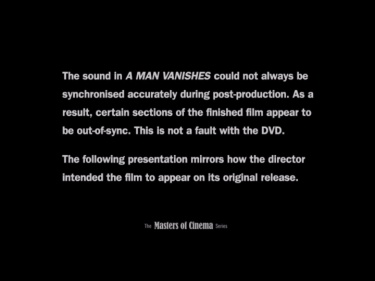 |
Screen Captures
Subtitle sample
|
|
|
|
|
|
|
|
|
|
|
|
Director Sh˘hei
Imamura directing the film within the film
|
|
| DVD Box Cover |
|
|
| Distribution |
Eureka Video Region 0 - NTSC |
|
|
Profound Desires of the Gods aka Kamigami no Fukaki Yokubo [Blu-ray]
(Shohei Imamura, 1968)
Review by Gary Tooze
Production: Theatrical: Nikkatsu Video: Masters of Cinema Series
Disc: Region: 'B'-locked (as verified by the Momitsu region FREE Blu-ray player) Runtime: 2:53:25.269 Disc Size: 44,605,218,128 bytes Feature Size: 42,178,990,080 bytes Video Bitrate: 29.99 Mbps Chapters: 19 Case: Standard Blu-ray case Release date: June 21st, 2010
Video: Aspect ratio: 2.35:1 Resolution: 1080p / 23.976 fps Video codec: MPEG-4 AVC Video
Audio: DTS-HD Master Audio Japanese 877 kbps 1.0 / 48 kHz / 877 kbps / 16-bit (DTS Core: 1.0 / 48 kHz / 768 kbps / 16-bit)
Subtitles: English (SDH), none
Extras: • Introduction by Tony Rayns (11:37 in HD!) • Japanese Trailer with English subtites (5:28 in HD!) • Extensive booklet with a new essay by Rayns (to accompany his introduction), rare stills, reprinted statements by Imamura, a lengthy 1994 career interview and a transcript of Imamura's introduction and Q&A session at the 1994 Edinburgh International Film Festival's screening of the film.
Bitrate:
Description: Shohei Imamura's epic production was of little
acclaim when first released and has since grown to become
legendary in Japanese cinema. Profound Desires Of The Gods
chronicles the tale of the Futori Family and an engineer, a
powerful encounter in both strange and powerful ways.
The Film:
One should note that Imamura's camerawork both raises the sense of
watching through a window and also conveys a sense of the animals --
actually legendary gods through the film's identification of divinity
with nature -- as the ones doing the watching. What the film's title,
content, and structure emphatically exclude is the possibility of
equating the film's "gods" with the film's audience. It would be smug
and arrogant to assume that the film's viewers are meant to be gods.
Because Imamura's camera often switches focus from the human characters
to the animals and back again, it is clear that the camera's field of
view does not singlemindedly represent any one particular perspective.
And even if it were Imamura's intention to make viewers into gods, so to
speak, the viewer-gods would be necessarily impotent and ineffective,
since the viewer is at the mercy of Imamura's cinematic and narrative
judgment.
The 42-year old Japanese film looks impressive in 1080P. There is abundant grain that is not overwhelming and the image is never glossy nor appears manipulated. Profound Desires of the Gods was shot almost entirely outdoors and the natural lighting gives the HD image an authentic, and consistent, appearance. There are moments of strong detail in the many close-ups of insects and marine life. Colors, like the rich flora of the island and the turquoise ocean look a little pale but I suspect this was a product of the film's age and utilized source. This is still a beautiful film, filled with unique and delightful shots, that benefits greatly by the move to hi-def. It's an incredible treat to simply see this film let alone in the glory of Blu-ray definition. I was treated to one of my most enjoyable presentations of the entire year with Profound Desires of the Gods.
CLICK EACH BLU-RAY CAPTURE TO SEE ALL IMAGES IN FULL 1920X1080 RESOLUTION
Audio :No superfluous boost going on here - its a lossless 1.0 channel (mono) track - DTS-HD Master at 877 kbps in original Japanese - pushing through the center channel. I appreciate the authenticity but fans who indulge for their Surround systems will be left empty handed with Profound Desires of the Gods. There is an original score by Toshir˘ Mayuzumi that never comes into play much and it is, Predictably, without range or depth but remains clear and consistent with crisp dialogue. There are optional English subtitles and, unfortunately, my Momitsu has identified it as being a region 'B'-locked Blu-ray ('Fiddlesticks' as the warning screen states).
Extras :We get a super introduction by Tony Rayns for almost a dozen minutes in HD. He talks about the historical aspects before discussing the director and production. We get a Japanese trailer in HD with English subtitles that runs an unusually lengthy 5.5 minutes and another of MoC's magnificent booklets - this with a new essay by Rayns, rare stills, reprinted statements by Imamura, a lengthy 1994 career interview and a transcript of Imamura's introduction and Q&A session at the 1994 Edinburgh International Film Festival's screening of the film.
BOTTOM LINE: Gary Tooze May 25th, 2010
|
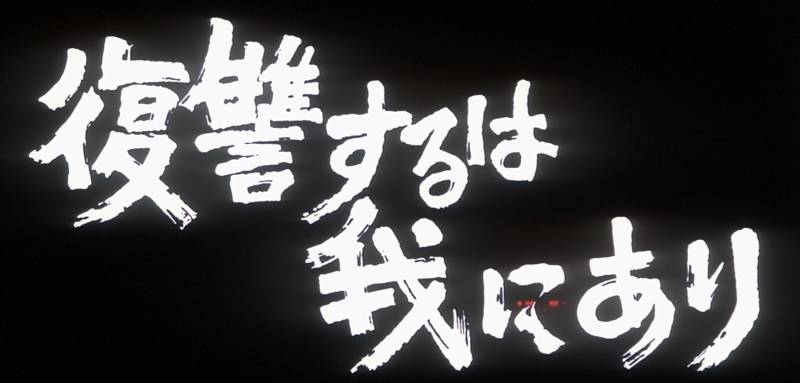
(aka 'Vengeance Is Mine' or 'Fukushű suruwa wareniari')
Directed by Shohei Imamura
Japan 1979
|
A thief, murderer, and charming lady-killer, Iwao Enokizu (Ken Ogata) is on the run from the police. Director Shohei Imamura turns this fact-based story, of the seventy-eight-day killing spree of a remorseless man from a devoutly Catholic family, into a cold, perverse, and at times diabolically funny tale of the primitive coexisting with the modern. More than just a true-crime case, Vengeance Is Mine bares mankind’s snarling id. ***
Based on the true story of Iwao Enokizu (Ken Ogata) and his
murderous rampage which sparked a 78-day nationwide manhunt, Shohei
Imamura's disturbing gem Vengeance is Mine won every major award in
Japan on the year of its release. Both seducing and repelling with its
unusual story and grisly humour, Imamura uncovers a seedy underbelly
of civilized Japanese society.
|
Poster
 |
Theatrical Release: April 21st, 1979
Reviews More Reviews DVD Reviews
Comparison:
|
Panorama - Region 3 - NTSC vs. Criterion - Region 1 - NTSC vs. Eureka (Masters of Cinema #17) - Region 2 - PAL vs. Eureka (Masters of Cinema #11) - Region 'B' - Blu-ray vs. Criterion - Region 'A' - Blu-ray |
Big thanks to Ole Kofoed and Gary Tooze for the DVD Screen Caps!
|
1) Panorama - Region 3 - NTSC - LEFT 2) Criterion - Region 1 - NTSC SECOND 3) Eureka (Masters of Cinema #17) - Region 2 - PAL - THIRD 4) Eureka (Masters of Cinema #11) - Region 'B' - Blu-ray - FOURTH5) Criterion - Region 'A' - Blu-ray - RIGHT |
| Box Covers |
Thinking of buying from YesAsia? CLICK HERE and use THIS UPDATED BEAVER PAGE to source their very best... |
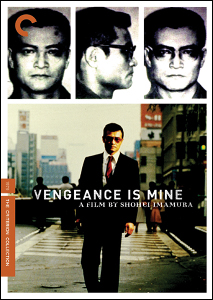
|
|
|
|
| Distribution |
Panorama Region 3 - NTSC |
Criterion - Spine #384 Region 1 - NTSC |
Eureka (Masters of Cinema #17) Region 2 - PAL |
Eureka (Masters of Cinema #11) Region 'B' - Blu-ray |
Criterion Collection Spine # 384Region 'A' - Blu-ray |
| Runtime | 2:20:17 | 2:20:30 | 2:15:20 (4% PAL speedup) | 2:20:30.380 | 2:20:45.728 |
| Video |
1.78:1 Aspect Ratio |
1.66:1 Aspect Ratio
16X9 enhanced NTSC 720x480 29.97 f/s |
1.85:1 Aspect Ratio
16X9 enhanced |
1.85:1 1080P Dual-layered Blu-ray Disc Size: 40,034,786,300 bytes Feature: 37,050,273,792 bytes Video Bitrate: 29.99 MbpsCodec: MPEG-4 AVC Video |
1.66:1 1080P Dual-layered Blu-ray Disc Size: 46,649,497,872 bytesFeature: 41,516,316,672 bytes Video Bitrate 34.99 MbpsCodec: MPEG-4 AVC Video |
|
NOTE: The Vertical axis represents the bits transferred per second. The Horizontal is the time in minutes. |
|||||
|
Bitrate:
Panorama
|
|
||||
|
Bitrate:
Criterion |
|
||||
|
Bitrate:
Eureka (Masters of Cinema #17)
|
|
||||
|
Bitrate:
Eureka (Masters of Cinema Blu-ray
|
|
||||
|
Bitrate:
Criterion Blu-ray
|
|
||||
| Audio | Japanese (Dolby Digital 2.0 / DD5.1) | Japanese (Dolby Digital 1.0) |
Japanese (Dolby Digital 2.0) |
DTS-HD Master Audio Japanese 1569 kbps 2.0 / 48 kHz / 1569 kbps / 16-bit (DTS Core: 2.0 / 48 kHz / 1509 kbps / 16-bit) Commentary: DTS-HD Master Audio English 1562 kbps 2.0 / 48 kHz / 1562 kbps / 16-bit (DTS Core: 2.0 / 48 kHz / 1509 kbps / 16-bit) |
LPCM Audio Japanese 1152 kbps 1.0 / 48 kHz /
1152 kbps / 24-bit Commentary: Dolby Digital Audio English 192 kbps 1.0 / 48 kHz / 192 kbps |
| Subtitles | English, Chinese, None | English, None | English, None | English, None | English, None |
| Features |
Release Information: Studio: Panorama Aspect Ratio:
Edition Details: Chapters 12 |
Release Information: Studio: Criterion Aspect Ratio:
Edition Details:
DVD
Release Date:
May 15th, 2007 Chapters 21 |
Release Information: Studio: Eureka (Masters of Cinema #17) Aspect Ratio:
Edition Details:
DVD
Release Date: October 24th, 2005 Chapters 12 |
Release Information: Studio: Eureka (Masters of Cinema #11)
1.85:1 1080P Dual-layered Blu-ray Disc Size: 40,034,786,300 bytes Feature: 37,050,273,792 bytes Video Bitrate: 29.99 MbpsCodec: MPEG-4 AVC Video
Edition Details:
DVD Included
Blu-ray
Release Date:
August 2nd, 2010 Chapters 12 |
Release Information: Studio: Criterion 1.66:1 1080P Dual-layered Blu-ray Disc Size: 46,649,497,872 bytesFeature: 41,516,316,672 bytes Video Bitrate 34.99 MbpsCodec: MPEG-4 AVC Video
Edition Details:
• Audio commentary from 2005
featuring critic Tony Rayns |
| Comments: |
NOTE:
The below
Blu-ray
captures were taken directly from the
Blu-ray
disc.
ADDITION: Criterion - Region 'A' - Blu-ray (August 14'): To keep it short - since the screen captures tell much of the story - the 1.66:1 Criterion shows more information in the frame (generally on top bottom and left edges) - like their 2007 DVD, the color scheme is richer than the other releases with fuller colors and strong contrast. I can't tell you which is more accurate to its theatrical roots. Hopefully you can determine for yourselves which visuals are more appealing. The Criterion is dual-layered with a max'ed out bitrate. After all is said and done, yes, I prefer the Criterion image. Audio, for my hearing, is a wash - both Blu-rays have lossless mono although the MoC may offer a shade more depth and the Criterion a more stable high-end - but I could be talking through my hat. Both offer optional English subtitles and the Criterion Blu-ray is, predictably, region 'A'-locked. Criterion include the 2005 Rayns commentary in addition to what was already on their 2007 DVD; a 10-minute subtitled video interview with director Shohei Imamura, produced by the Directors Guild of Japan. There is also a trailer, teaser and a 32-page liner notes booklet with essays (Michael Atkinson) an interview with Imamura by writer Toichi Nakata from 1994, we also get a small glimpse into Imamura's writing and approach to filmmaking in some short writings by him. This Criterion release is NOT dual-format - the package only has a Blu-ray disc. Great presentation, solid extras - this Criterion Blu-ray release is a must-own and those who are capable may even wish to consider double-dipping from the MoC 1080P. ***
ADDITION - Masters of Cinema - Blu-ray - August 2010': I've watched this Blu-ray only once and would like to take another viewing - or some sample scenes toggling back and forth with the DVDs - over the next few days. As this came out at the same time as the release we will post the review but please return for more information on the image quality. On my system I saw what appeared to be an unusual type of banding while in motion but I couldn't reproduce it on my computer screen captures - so I'm a little curious. The dual-layered transfer is in and around 1.85:1 as the previous MoC DVD. Color-wise this looks the best of all the releases besides the Criterion. The MoC DVD from 2005 (is it that long ago?) has lost much of the green haze and skin tones seem much more accurate in the new format release. With both the improved, more accurate, color scheme, slightly lighter contrast and the higher resolution I see more detail in the background. Audio is a lossless DTS Master 2.0 channel at 1569 Kbps and it improves in clarity and depth although this would be fairly subtle to most viewers. There are optional English subtitles and my Momitsu has determined it to be Region 'B'-locked. Digital extras are the same with the excellent Rayns commentary and Alex Cox intro (in HD) - as well as the Japanese trailers. We do get, what appears to be a new 56-page book featuring a lengthy 1994 career-spanning interview with Imamura by T˘ichi Nakata, some original promotional material and a director’s statement. Our initial feeling is that this Blu-ray is the best release - in every area. We will investigate the HD visuals and report back soon. ***
ADDITION - Criterion - Region 1- NTSC April 07': There is an issue with the aspect ratio of this Imamura film. Criterion claim 'Vengeance Is Mine is presented in its original aspect ratio of 1.66:1' and the only AR details I could get about the film are that the negative ratio was 1.96:1. If we do get any more details we will post it here. Regardless of that the Criterion image must be considered an improvement over the two existing editions. It is much brighter, colors more vibrant and most importantly there is significantly more information in the frame. The Eureka, to their credit, probably did very little in the way of digital enhancement and I think it may actually be the sharpest, but the dullness (and greenish haze) are an eye-sore next to the Criterion. I can't comment on which is more accurate in regards to theatrical representation, but purely on visual appearance the Criterion is best for the the visual appeal of the colors although skin tones do seem overly red at times to me. It seems obvious that Criterion have boosted the black levels somewhat. If this is bothersome to you then you may wish to avoid this release. The Criterion offers a 10-minute subtitled video interview with director Shohei Imamura, produced by the Directors Guild of Japan. There is also a trailer, teaser and a 32-page liner notes booklet with essays (Michael Atkinson) an interview with Imamura by writer Toichi Nakata from 1994, we also get a small glimpse into Imamura's writing and approach to filmmaking in some short writings by him. The Criterion supplements are good but do not eclipse the Rayns commentary on the Eureka Masters of Cinema edition which also includes the Cox intro and 35-page liner notes booklet. I might say that overall I lean towards the Eureka (loved the commentary) but the Criterion image is so captivating in side-by-side analysis. For Imamura fans I suggest owning both. Extravagant perhaps but the film's impact and brooding intensity may warrant it. If you are not into audio commentaries then obviously the Criterion may be the way to go. It has been digitally enhanced but as it is not a blanket approach we often consider this a form of restoration. It amounts to a personal decision on which you prefer. ***
ADDITION - Panorama - November 05' - The non-anamorphic Panorama is a 2
X DVD5 set spreading the image over two single layered discs - and many
might consider it to be fatally poor even considering its price - it is
obviously evident that it is by far the weaker of the two versions. It
has blown-out contrast and chroma evident (see large capture #3 - his
sweater). Colors have been manipulated out of proportion in the Panorama
edition and you can see how much in the comparison - skin tones and
clothing seem particularly affected.
Obviously extras and everything else go the way of the Eureka (Moc) disc. No real
contest at all here. ****
The
Master's of Cinema DVD is a bit on the dull side with a kind of greenish
haze over the image. Original audio and adept removable
subtitles compliment the viewing experience. The enthusiastic Cox intro, Rayns informative commentary and extensive liner notes booklet continue
to signify Eureka's MoC as the PAL counterpart to the Criterion
Collection. Outside of a theatrical showing, Imamura's caustic and
matter-of-fact film expose has probably never looked better.
|
DVD Menus
Panorama - Region 3 - NTSC
 |
 |
|
|
 |
(Criterion - Region 1 - NTSC - LEFT
vs. Eureka (Masters of Cinema #17) - Region 2 - PAL - RIGHT)
|
|
 |
|
|
 |
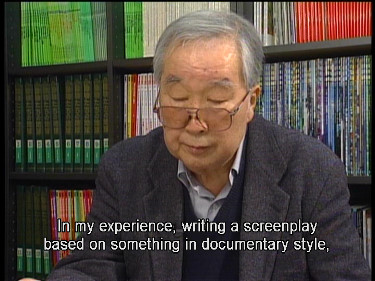 |
 |
|
|
 |
Masters of Cinema Blu-ray
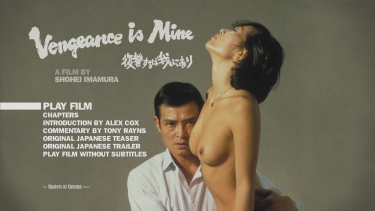 |
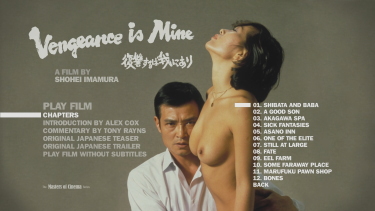 |
|
|
 |
Criterion Blu-ray
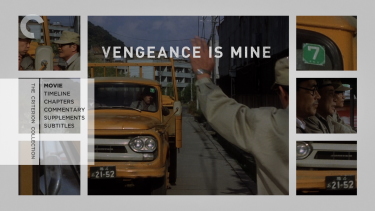 |
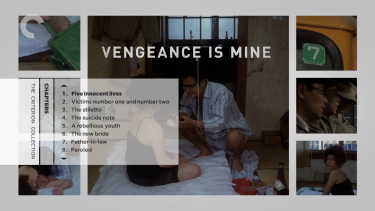 |
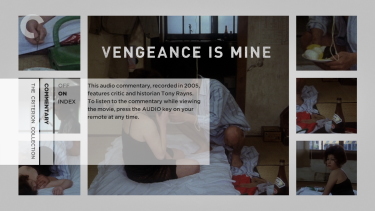 |
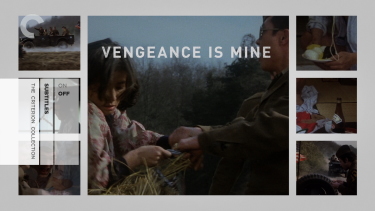 |
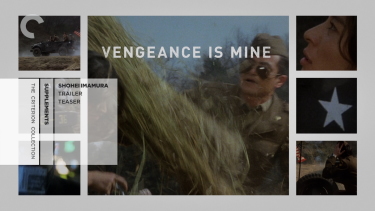 |
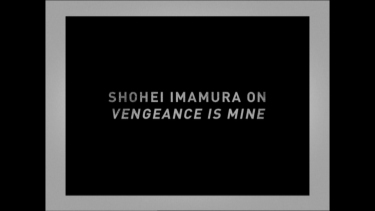 |
|
|
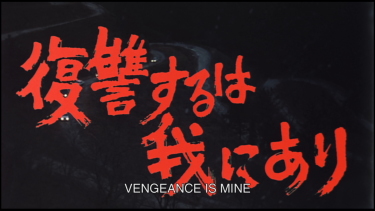 |
CLICK EACH BLU-RAY CAPTURE TO SEE ALL IMAGES IN FULL 1920X1080 RESOLUTION
Screen Captures
|
1) Panorama - Region 3 - NTSC - TOP 2) Criterion - Region 1 - NTSC SECOND 3) Eureka (Masters of Cinema #17) - Region 2 - PAL - THIRD 4) Eureka (Masters of Cinema #11) - Region 'B' - Blu-ray - FOURTH5) Criterion - Region 'A' - Blu-ray - BOTTOM |
Subtitle Sample
|
|
|
|
|
|
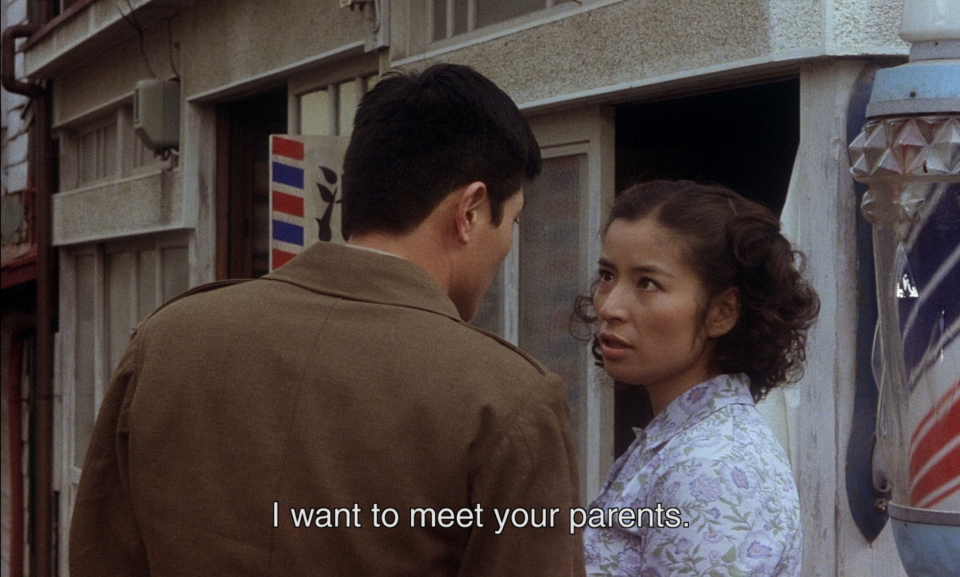 |
|
1) Panorama - Region 3 - NTSC - TOP 2) Criterion - Region 1 - NTSC SECOND 3) Eureka (Masters of Cinema #17) - Region 2 - PAL - THIRD 4) Eureka (Masters of Cinema #11) - Region 'B' - Blu-ray - FOURTH5) Criterion - Region 'A' - Blu-ray - BOTTOM |
|
|
|
|
|
|
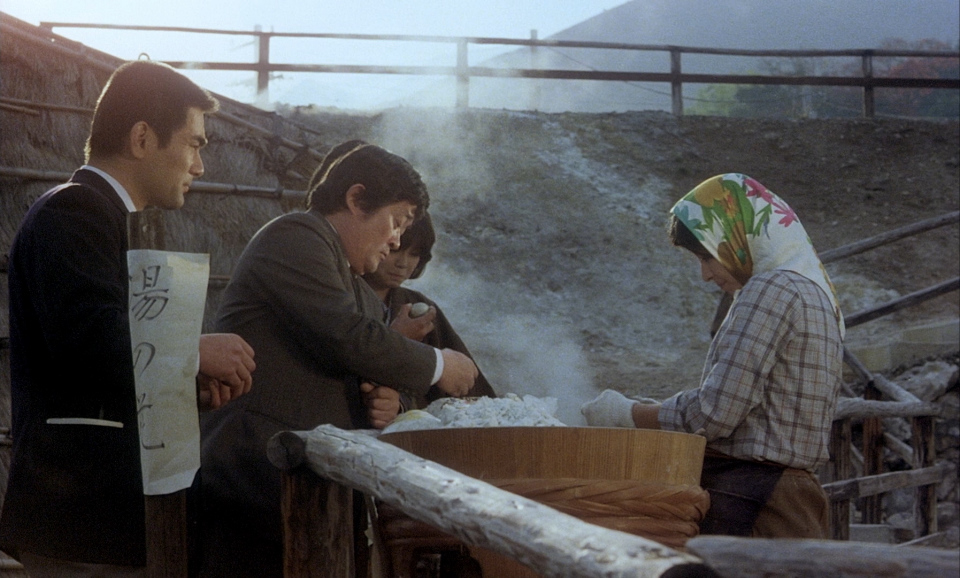 |
|
1) Panorama - Region 3 - NTSC - TOP 2) Criterion - Region 1 - NTSC SECOND 3) Eureka (Masters of Cinema #17) - Region 2 - PAL - THIRD 4) Eureka (Masters of Cinema #11) - Region 'B' - Blu-ray - FOURTH5) Criterion - Region 'A' - Blu-ray - BOTTOM |
|
|
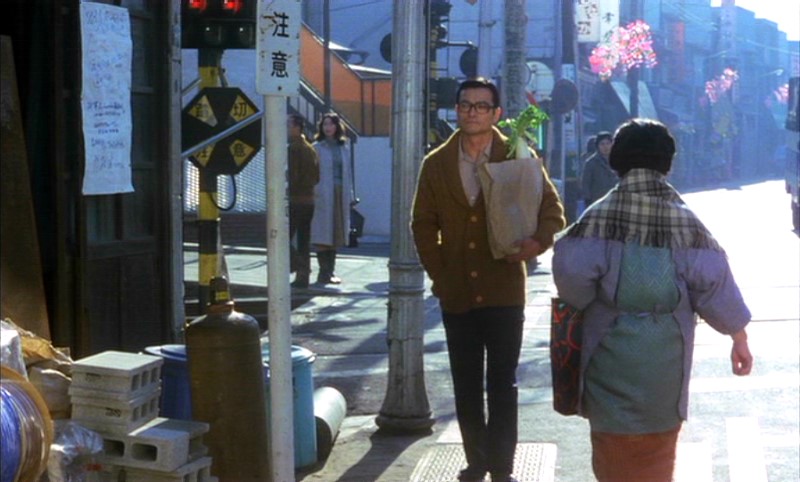 |
|
|
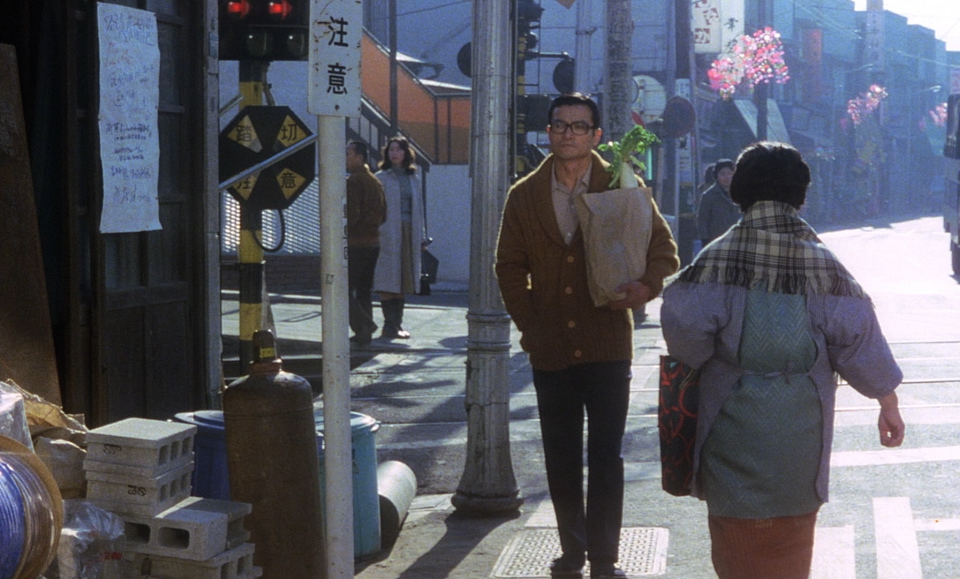 |
Report Card:
|
Image: |
Criterion Blu-ray |
|
Sound: |
Blu-rays |
| Extras: | Blu-ray |
| Menu: | - |
| Box Covers |
Thinking of buying from YesAsia? CLICK HERE and use THIS UPDATED BEAVER PAGE to source their very best... |

|
|
|
|
| Distribution |
Panorama Region 3 - NTSC |
Criterion - Spine #384 Region 1 - NTSC |
Eureka (Masters of Cinema #17) Region 2 - PAL |
Eureka (Masters of Cinema #11) Region 'B' - Blu-ray |
Criterion Collection Spine # 384Region 'A' - Blu-ray |
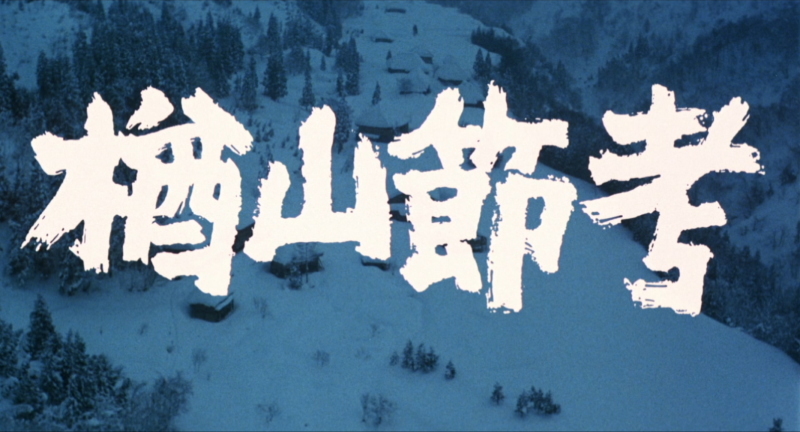
(aka 'The Ballad of Narayama' or 'Narayama bushiko')
Directed by
Shohei Imamura
Japan 1983
|
Cinematic anthropologist extraordinaire Shōhei Imamura won his first Palme d’Or at the 1983 Cannes Film Festival for The Ballad of Narayama [Narayama bushikō], his transcendent adaptation of two classic stories by Shichirō Fukazawa.
***
The
great legacy of Japanese cinema finds in Imamura a gifted heir. From Mizogushi and Ozu to Kurosawa and Oshima, Japanese film-making has created a
whole tradition which has acquired universal acclaim due to its immense insight
and contribution to world cinema. Imamura retains and above all preserves most
of the elements typical of the Japanese cinematic culture, having already
created some astonishing pieces of work. From the magnificent The Profund Desire
of the Gods to Eijanaika and his latest compelling
Black Rain (not to be
confused with Ridley Scott's film) Imamura has already established himself as
Japan's finest contemporary director. Excerpt from Spiros Gangas of the Edinburgh Film Society website located HERE. |
Posters
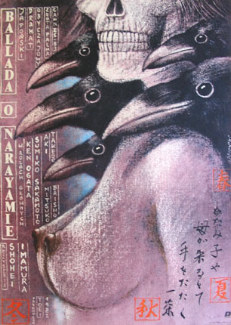 |
 |
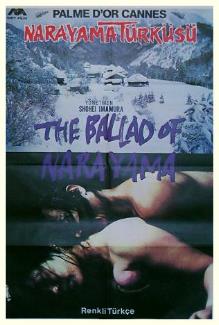 |
Theatrical Release: April 29th, 1983 - Tokyo
Reviews More Reviews DVD Reviews
Comparison:
|
Intercontinental Video - Region 3 - NTSC vs. Animeigo - Region 1 - NTSC vs. Masters of Cinema (Dual Format) - Region 'B' - Blu-ray |
|
1) Intercontinental Video - Region 3 - NTSC LEFT 2) Animeigo - Region 1 - NTSC MIDDLE 3) Masters of Cinema - Region 'B' - Blu-ray - RIGHT
|
| Box Covers |
Thinking of buying from YesAsia? CLICK HERE and use THIS UPDATED BEAVER PAGE to source their very best... |
|
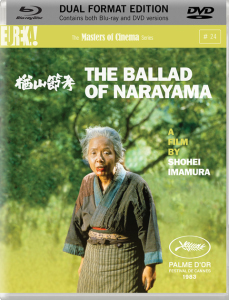 |
| Distribution | Intercontinental Video - Region 3 - NTSC | Animeigo - Region 1 - NTSC | Masters of Cinema - Spine #24 - Region 'B' - Blu-ray |
| Runtime | 2:09:40 | 2:09:40 | 2:10:04.546 |
| Video | 1.84:1
Original Aspect Ratio Average Bitrate: 6.81 mb/s NTSC 720x480 29.97 f/s |
1.85:1
Original Aspect Ratio Average Bitrate: 7.13 mb/s NTSC 720x480 29.97 f/s |
1080P Dual-layered Blu-ray Disc Size: 42,402,991,946 bytesFeature: 36,634,908,672 bytes Codec: MPEG-4 AVC Video Total Video Bitrate: 34.99 Mbps |
|
NOTE: The Vertical axis represents the bits transferred per second. The Horizontal is the time in minutes. |
|||
| Bitrate:
IV |
|
||
| Bitrate:
Animeigo |
|
||
| Bitrate:
Blu-ray |
|
||
| Audio | Japanese (Dolby Digital 2.0) | Japanese (Dolby Digital 2.0) |
DTS-HD Master Audio Japanese 779 kbps 2.0 /
48 kHz / 779 kbps / 16-bit (DTS Core: 2.0 / 48 kHz / 512
kbps / 16-bit) |
| Subtitles | English, Traditional Chinese, Simplified Chinese, None | English (Full, Limited or captions only), None | English, None |
| Features |
Release Information: Studio: Intercontinental Video Aspect Ratio: Original Aspect Ratio 1.84:1
Edition Details: • Photo
Gallery |
Release Information: Studio: Animeigo Aspect Ratio: Original Aspect Ratio 1.85:1
Edition Details: • Program notes • Photo
Gallery |
Release Information: Disc Size: 42,402,991,946 bytesFeature: 36,634,908,672 bytes Codec: MPEG-4 AVC Video Total Video Bitrate: 34.99 Mbps Edition Details: • Exclusive
new video interview with scholar Tony Rayns (19:17)
•
NTSC DVD of the Feature |
| Comments: |
NOTE: The below Blu-ray captures were taken directly from the Blu-ray disc. ADDITION: Masters of Cinema (Dual Format) - Region 'B' - Blu-ray - October 11': I t's a pretty dramatic improvement over the less-than-stellar DVDs. The Masters of Cinema disc is darker with richer colors. There is some nice grain, contrast almost achieves moiring via the pitch black-levels without achieving it. There is more information in the frame on the 1.85:1 aspect ratio Blu-ray. Overall, it's like seeing the film afresh. It's dual-layered and progressive and very much in-line with what we have come to expect from the, precise and professional, MoC group.The DVDs both had some rough patches in the audio (either inherent in the production or the best source available) and while they still seem to exist and much smoother and far less noticeable via the DTS-HD Master 2.0 channel stereo at 779 kbps. It has no response depth as the film doesn't demand it - but we can trust the lossless sound is the best available - despite limitations of the production. There are new, optional English subtitles in a clean and clear white font. The Blu-ray disc is region 'B'-locked. Supplements, predictably, advance beyond the SD releases and include an exclusive new, 20-minute, video interview with scholar Tony Rayns discussing Sh˘hei Imamura and the production while including interesting details. There are four original Japanese theatrical trailers and a wonderful 44-page full-color booklet containing a 1983 director’s statement by Sh˘hei Imamura; a newly translated 1983 interview with Imamura conducted by Max Tessier; the newly translated production diary for the film kept by producer Jir˘ Tomoda; a wide selection of rare production stills; and facsimile imagery from the film’s original Japanese press book. The Dual Format Blu-ray package contains a dual-layered NTSC DVD of the Feature film also containing the same extras. This director's films are some of the most interesting - afraid of taboos and fringe topics - and I think this is a fantastic choice for the Masters of Cinema to have undertaken in the new format. We finally have a home theater release that is closer to film and the extras are important to Imamura fans. Strongly recommended! *** ADDITION: Animeigo - Region 1- NTSC June 08': This new Animeigo edition is dual-layered and is superior to the old, now out-of-print, I.V. release in every area. It has less artifacts, is smoother, slightly better skin tones and is progressive (where the single-layered Region 3 release is interlaced - see 'combing' in last capture!). Aside from the interlacing the I.V. wasn't a decidedly poor image but the Animeigo trumps it. Subtitles are certainly more thorough and give the three-tired option of 'Full', 'Limited' or 'captions only'. This effort is much appreciated. The font is a bit heavy and bright yellow but these are my only complaints. Both sport a fairly clear (some hiss), yet unremarkable, 2.0 channel Japanese audio track. The Animeigo jumps ahead in the supplement department with some static screen program notes to augment the trailers and gallery. The Animeigo is a good edition and I'm very happy they didn't mess it up. It's clean and progressive - looks about as good as it will for the time being - and some effort has been put into the subtitle translation(s). Yes, recommended - the film has grown on me quite a bit over the years. More than just Imamura fans should indulge! ***
ON THE INTERCONTINENTAL VIDEO: Considering this is a non-progressive image (see combing sample - last capture) it doesn't look too bad. Anamorphic and tight to the frame it sports adequate if not stellar subtitle translations. It may be a shade soft at times but colors look true and muted and contrast is more than acceptable. No applicable extras to contend with but for the calibre of director and film this is an exceptional price-to-value ratio. Probably one of my biggest complaints is against the cover design. At $14 though we still recommend. |
Menus
Intercontinental Video - Region 3 - NTSC LEFT vs.
Animeigo - Region 1 - NTSC RIGHT
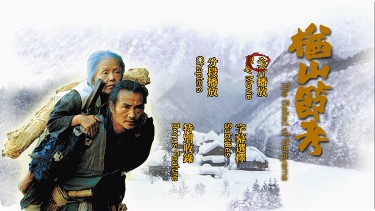 |
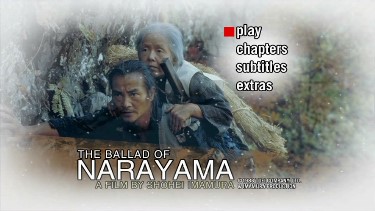 |
 |
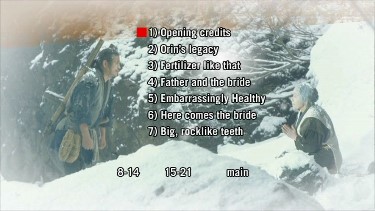 |
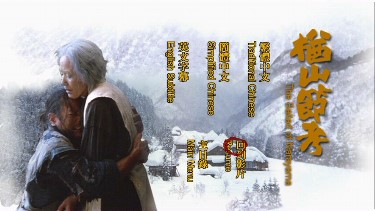 |
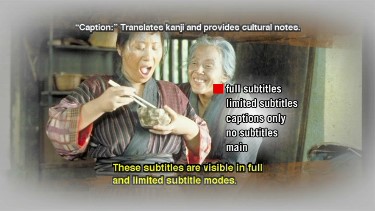 |
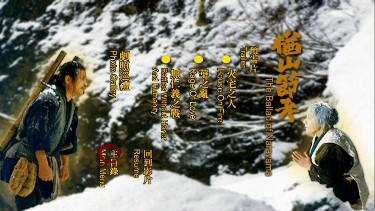 |
 |
Masters of Cinema - Region 'B' - Blu-ray
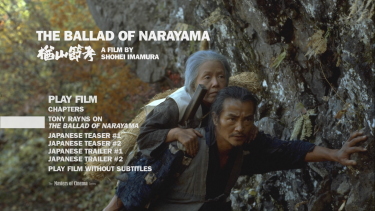 |
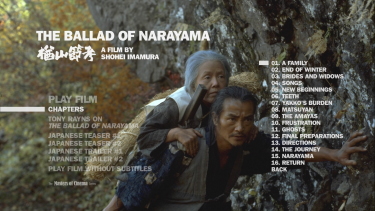 |
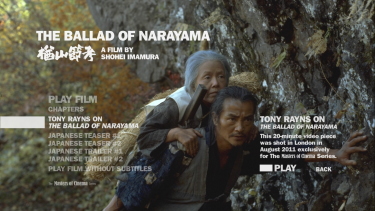 |
 |
Subtitle Sample
|
1) Intercontinental Video - Region 3 - NTSC TOP 2) Animeigo - Region 1 - NTSC MIDDLE 3) Masters of Cinema - Region 'B' - Blu-ray - BOTTOM
|
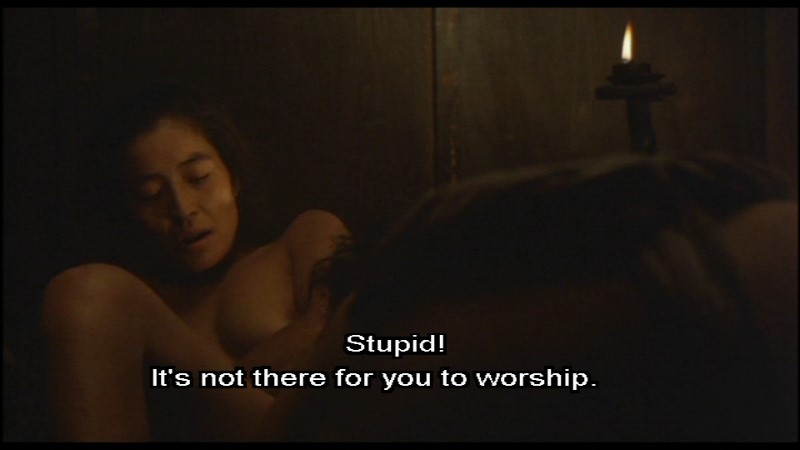 |
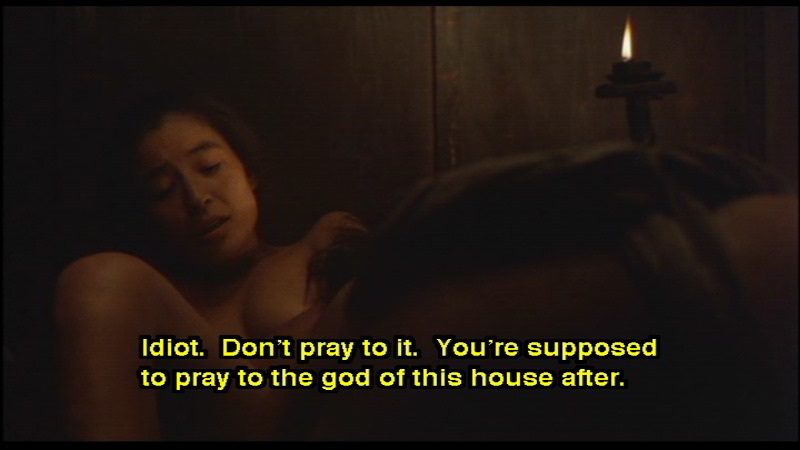 |
Screen Captures
|
1) Intercontinental Video - Region 3 - NTSC TOP 2) Animeigo - Region 1 - NTSC MIDDLE 3) Masters of Cinema - Region 'B' - Blu-ray - BOTTOM
|
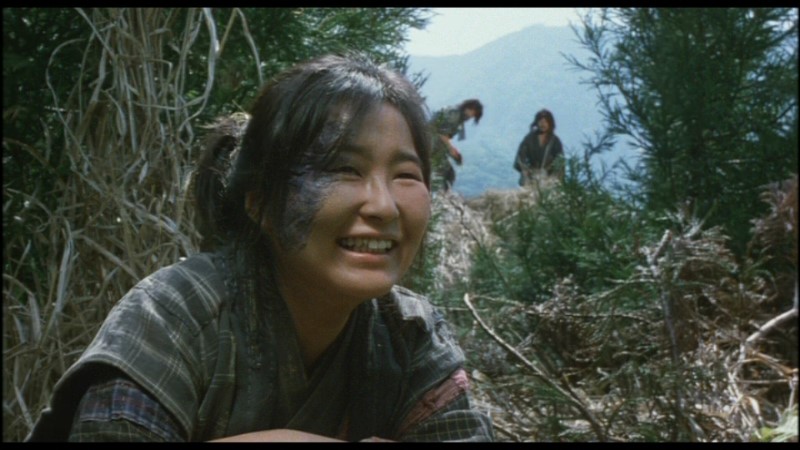 |
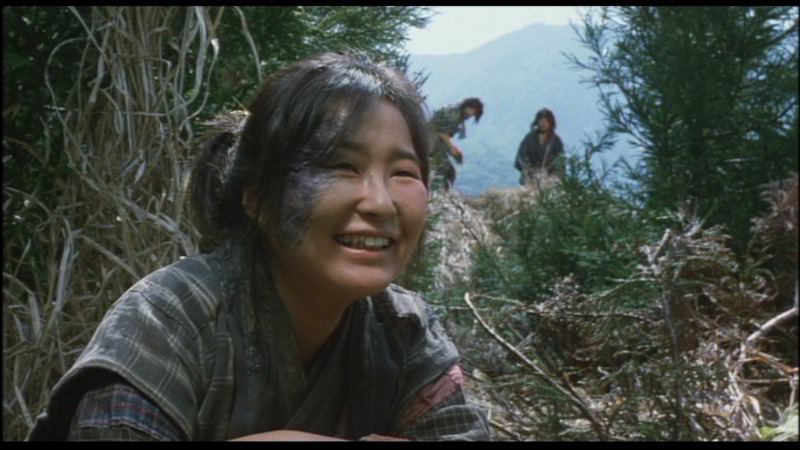 |
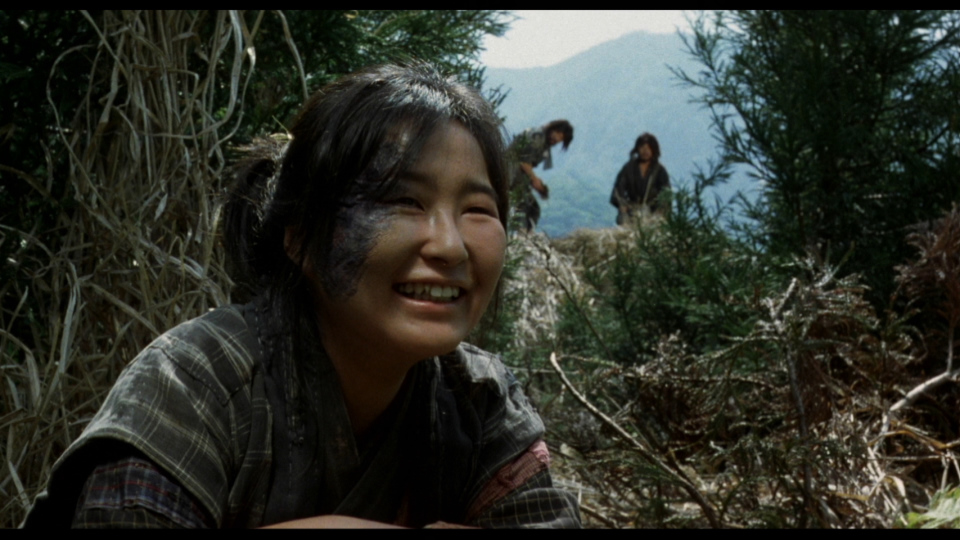 |
|
1) Intercontinental Video - Region 3 - NTSC TOP 2) Animeigo - Region 1 - NTSC MIDDLE 3) Masters of Cinema - Region 'B' - Blu-ray - BOTTOM
|
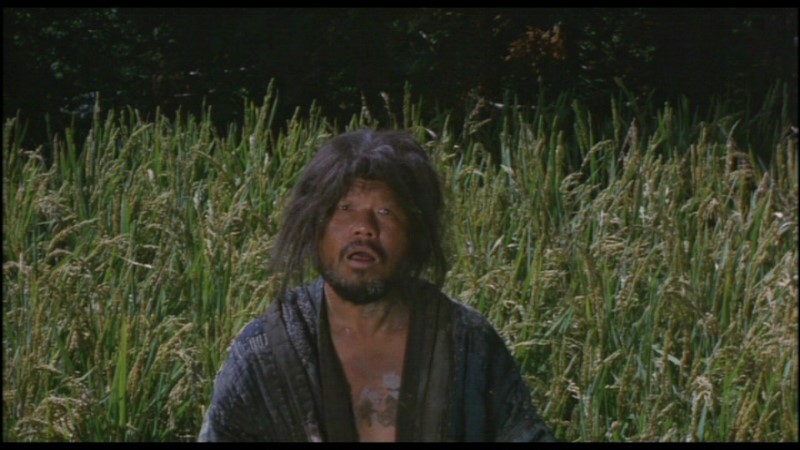 |
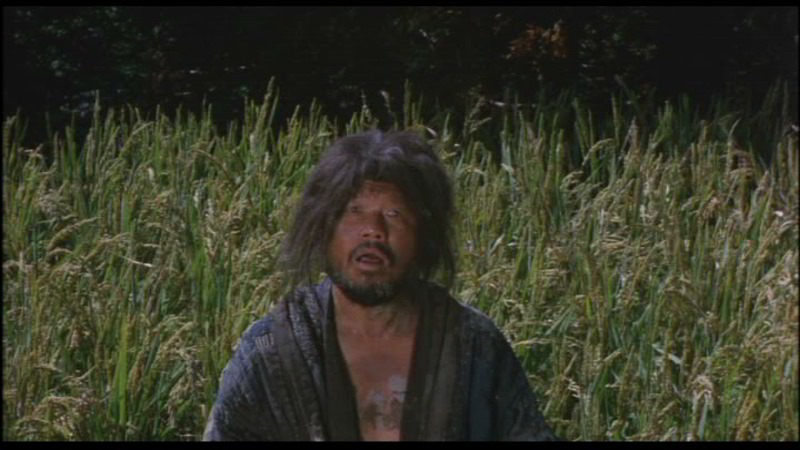 |
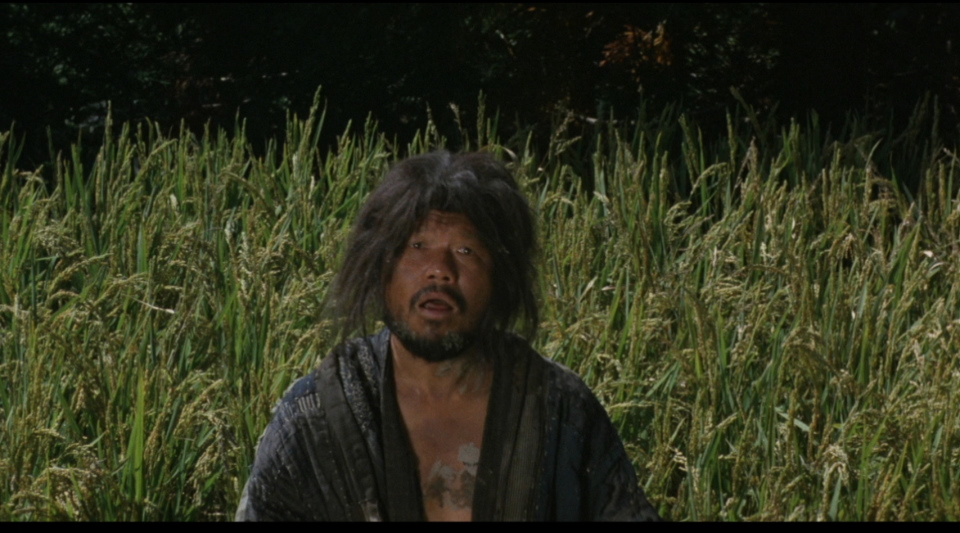 |
|
1) Intercontinental Video - Region 3 - NTSC TOP 2) Animeigo - Region 1 - NTSC MIDDLE 3) Masters of Cinema - Region 'B' - Blu-ray - BOTTOM
|
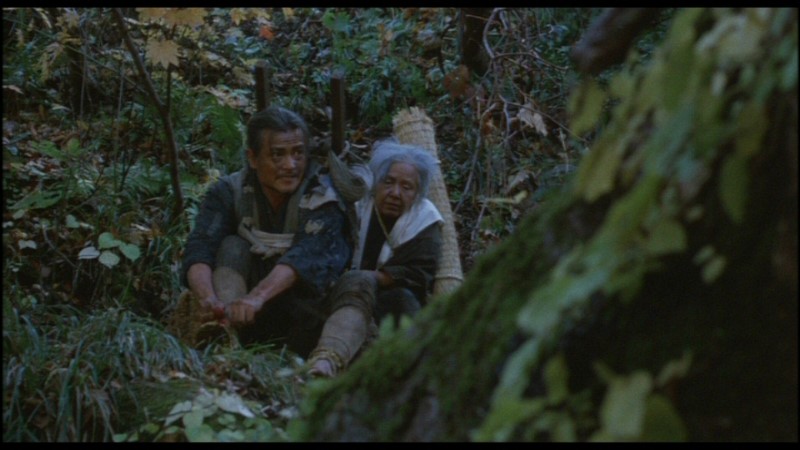 |
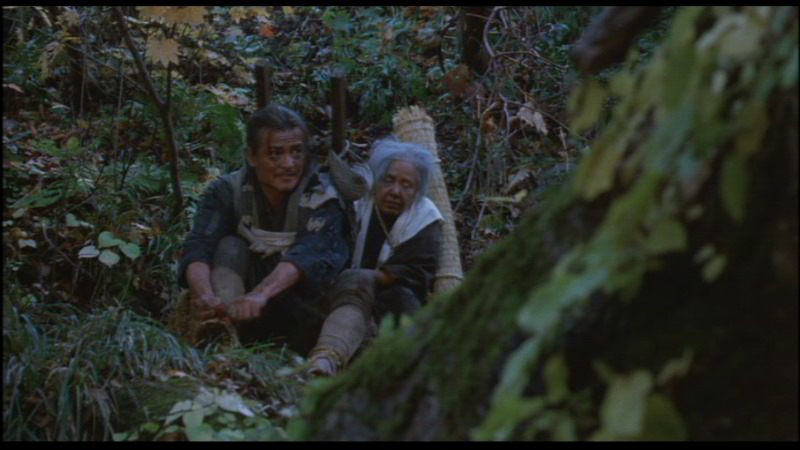 |
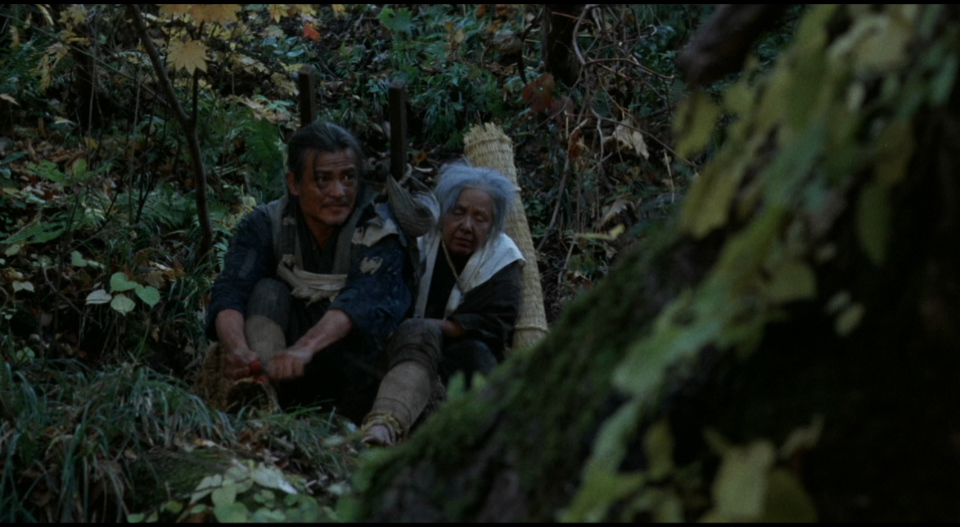 |
|
1) Intercontinental Video - Region 3 - NTSC TOP 2) Animeigo - Region 1 - NTSC MIDDLE 3) Masters of Cinema - Region 'B' - Blu-ray - BOTTOM
|
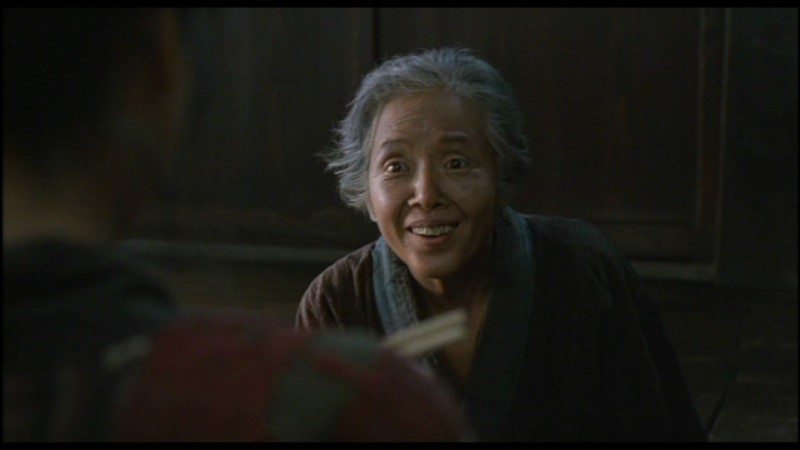 |
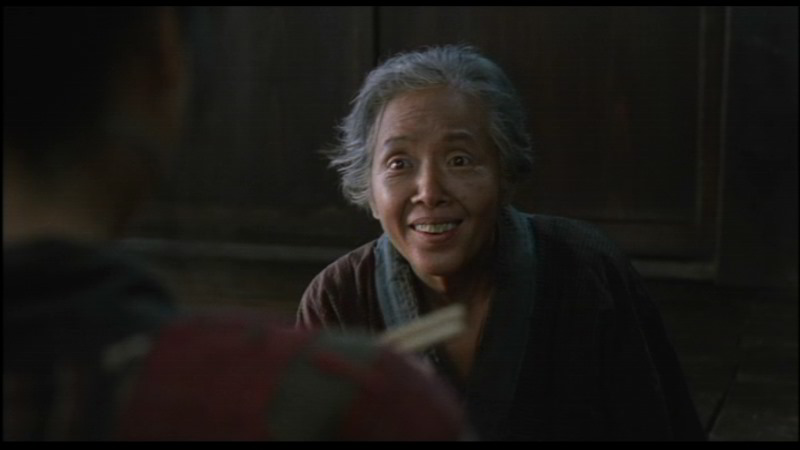 |
![]()
![]()
![]()
![]()

Search DVDBeaver
|
S E A R C H D V D B e a v e r |
